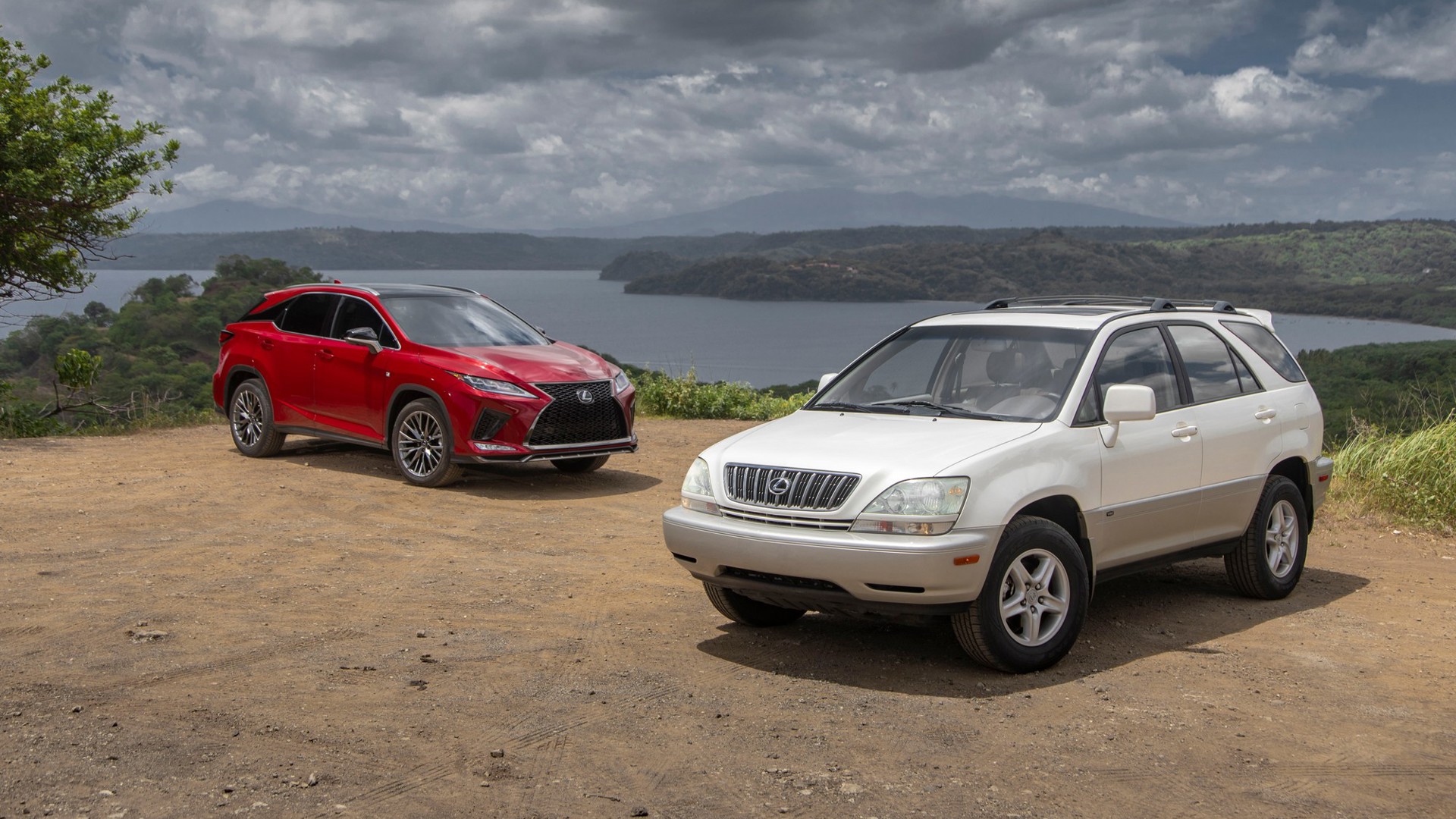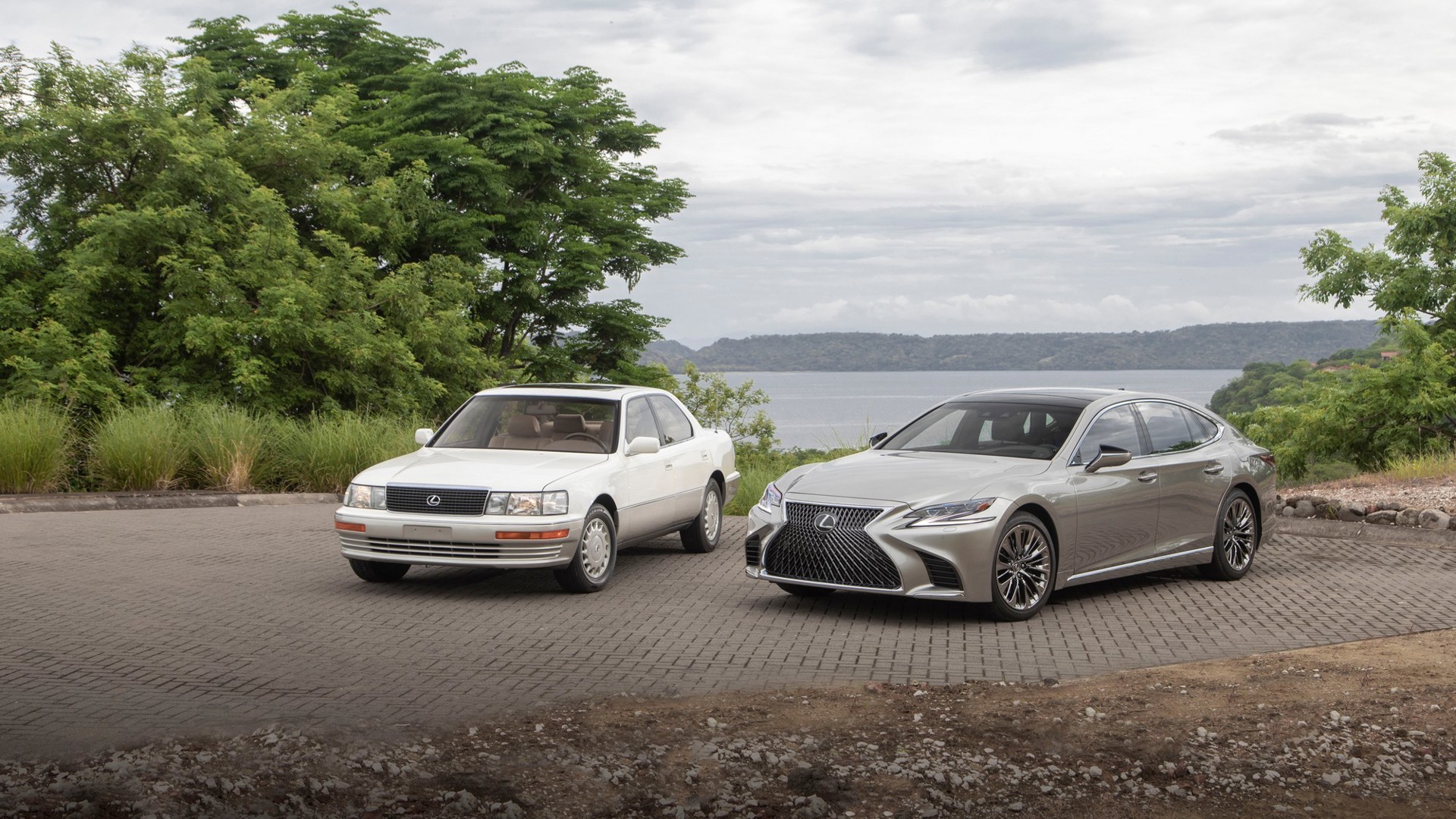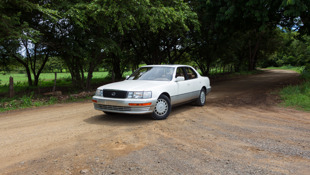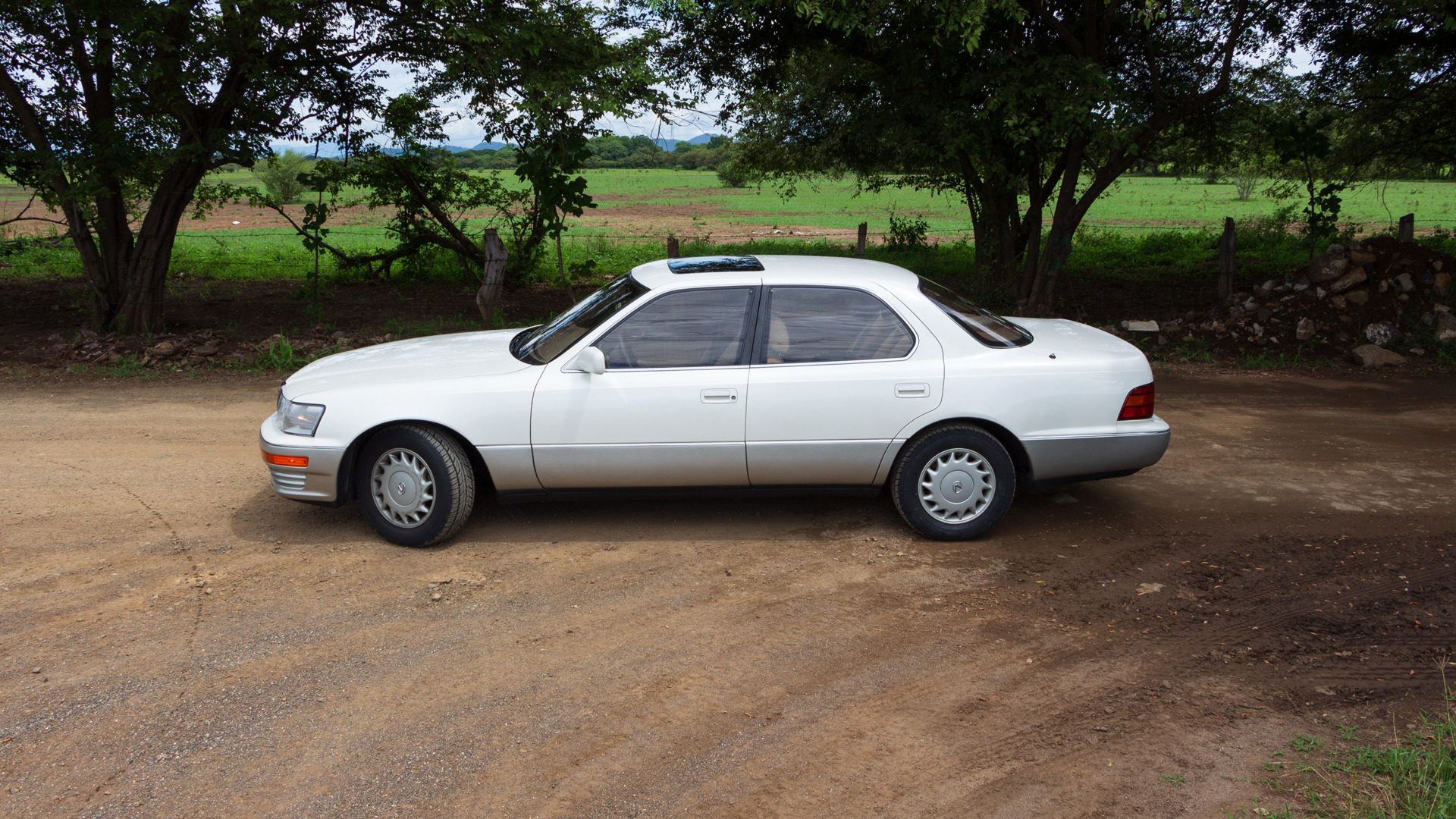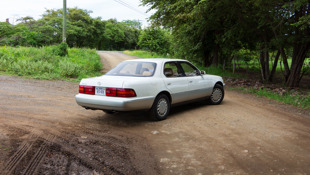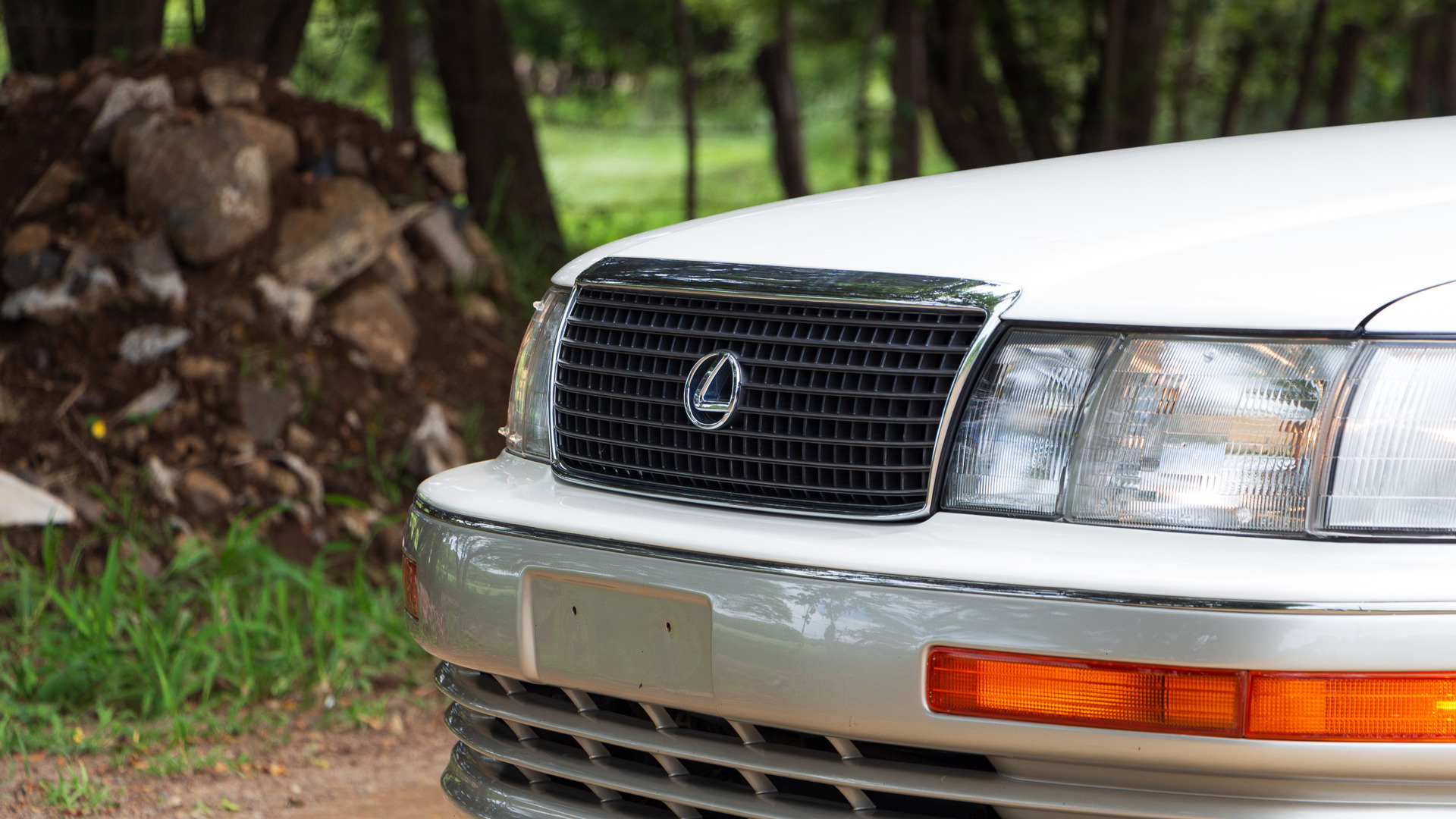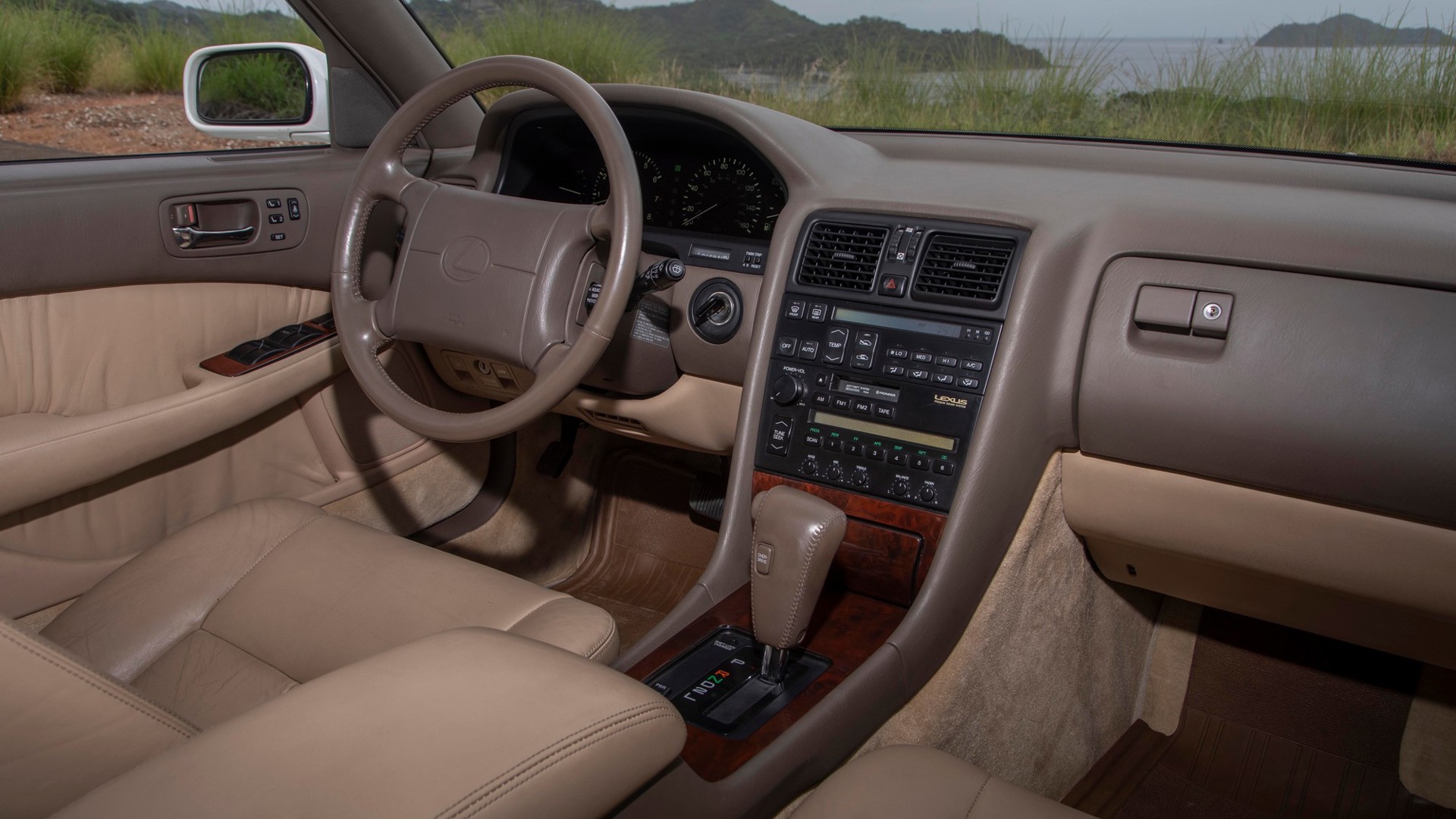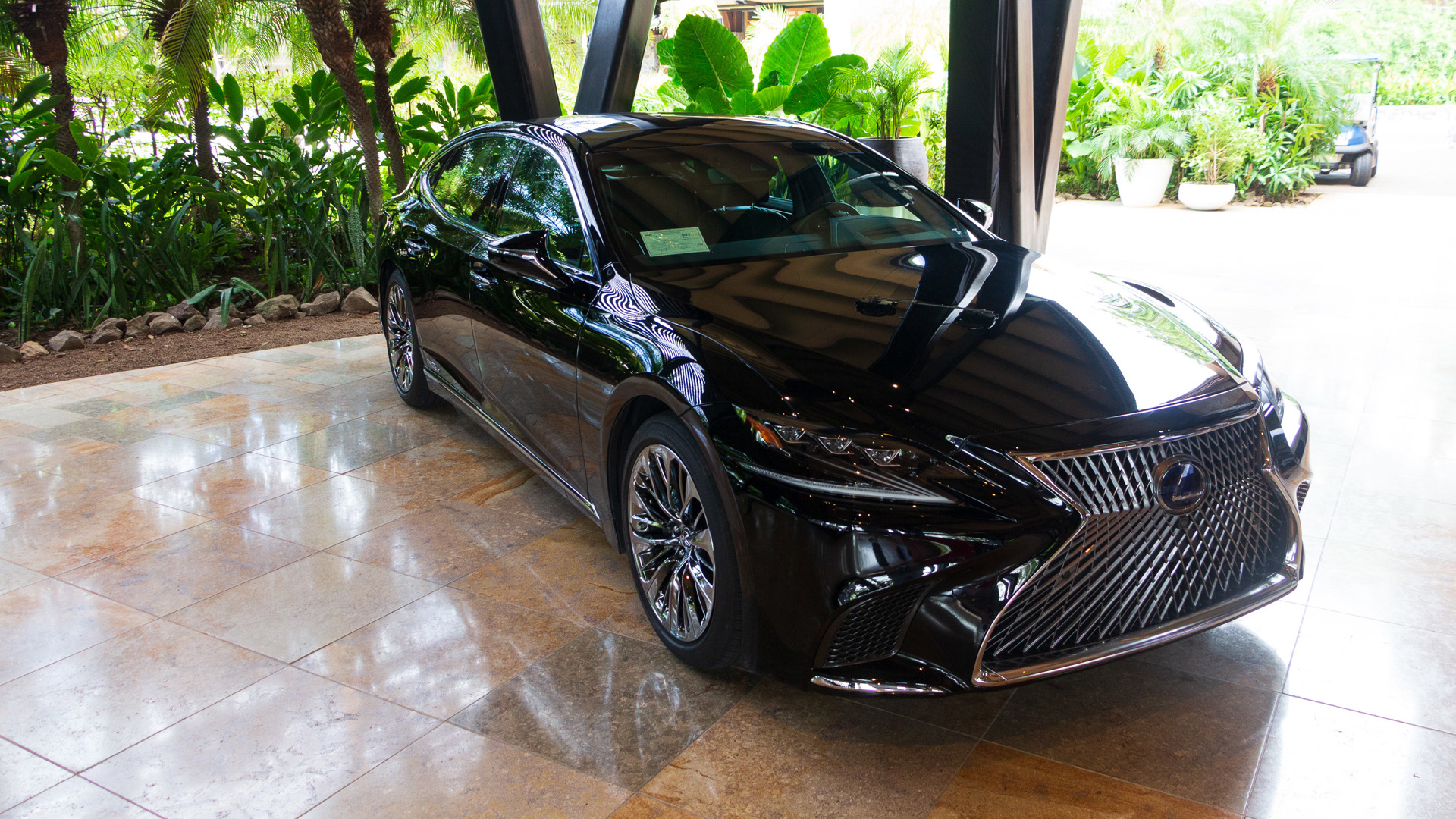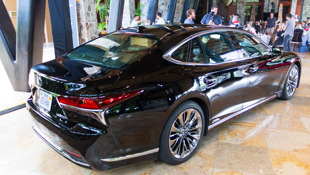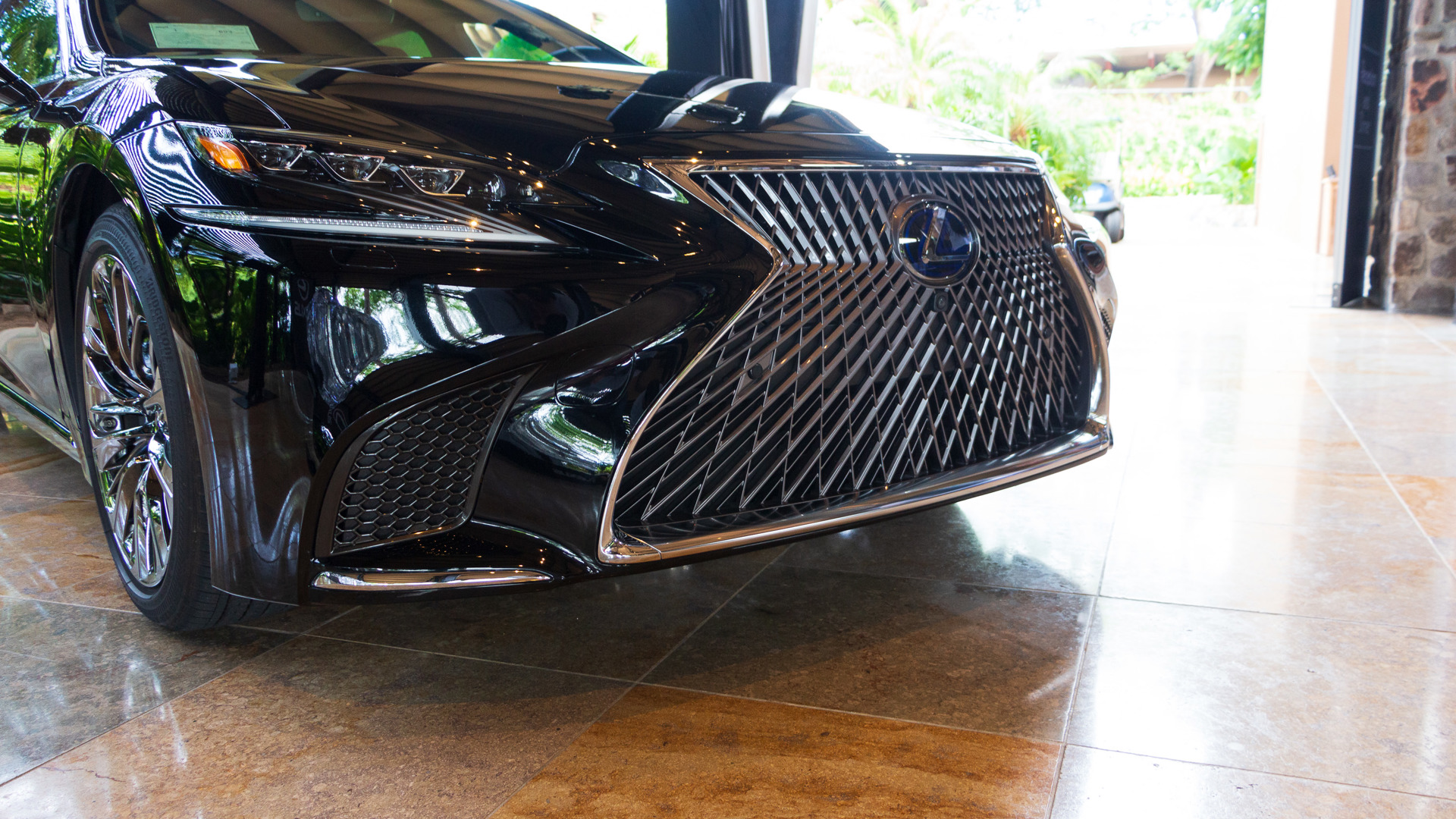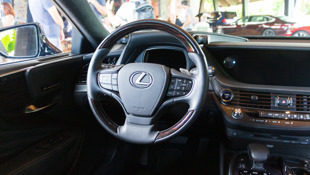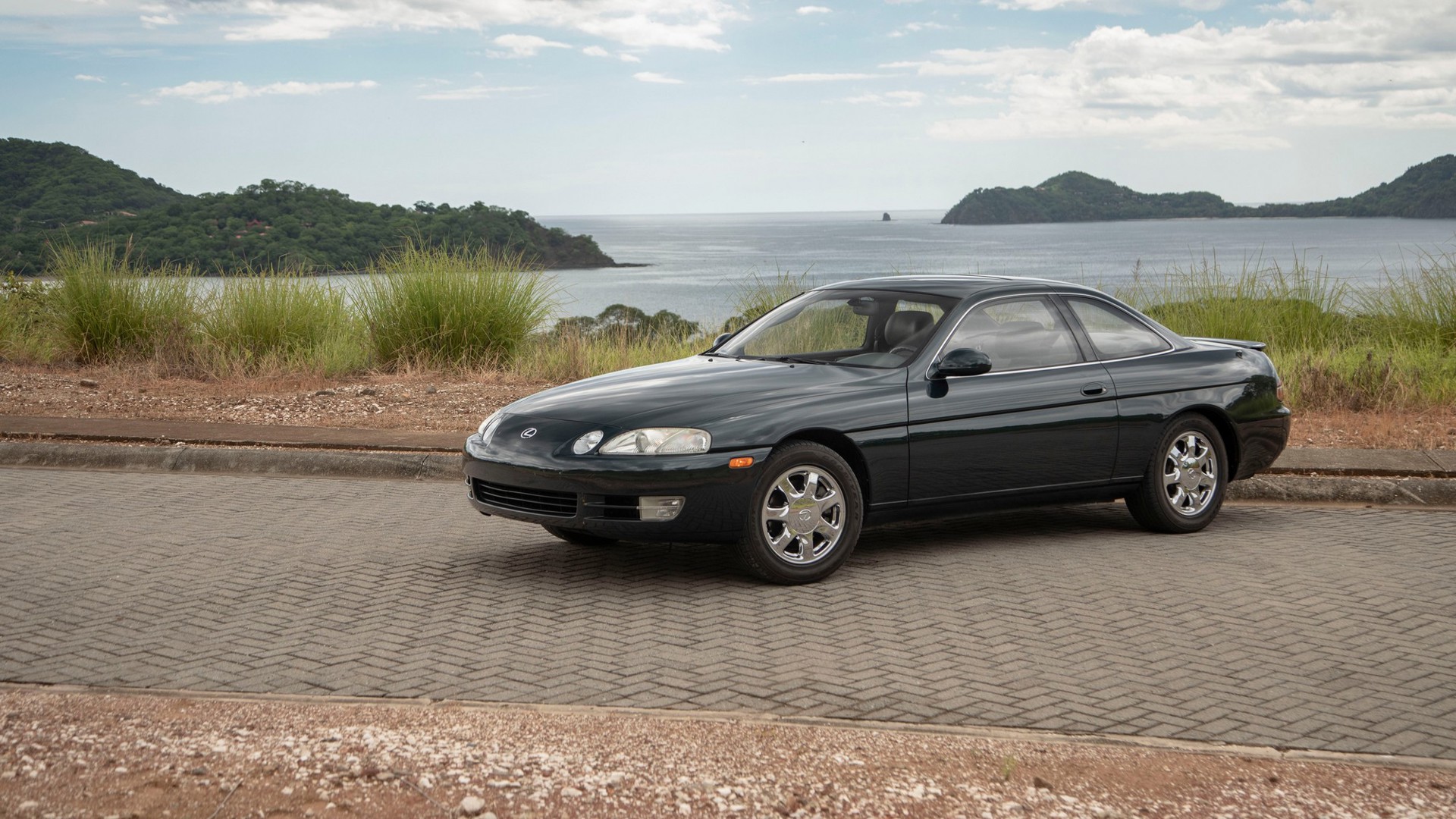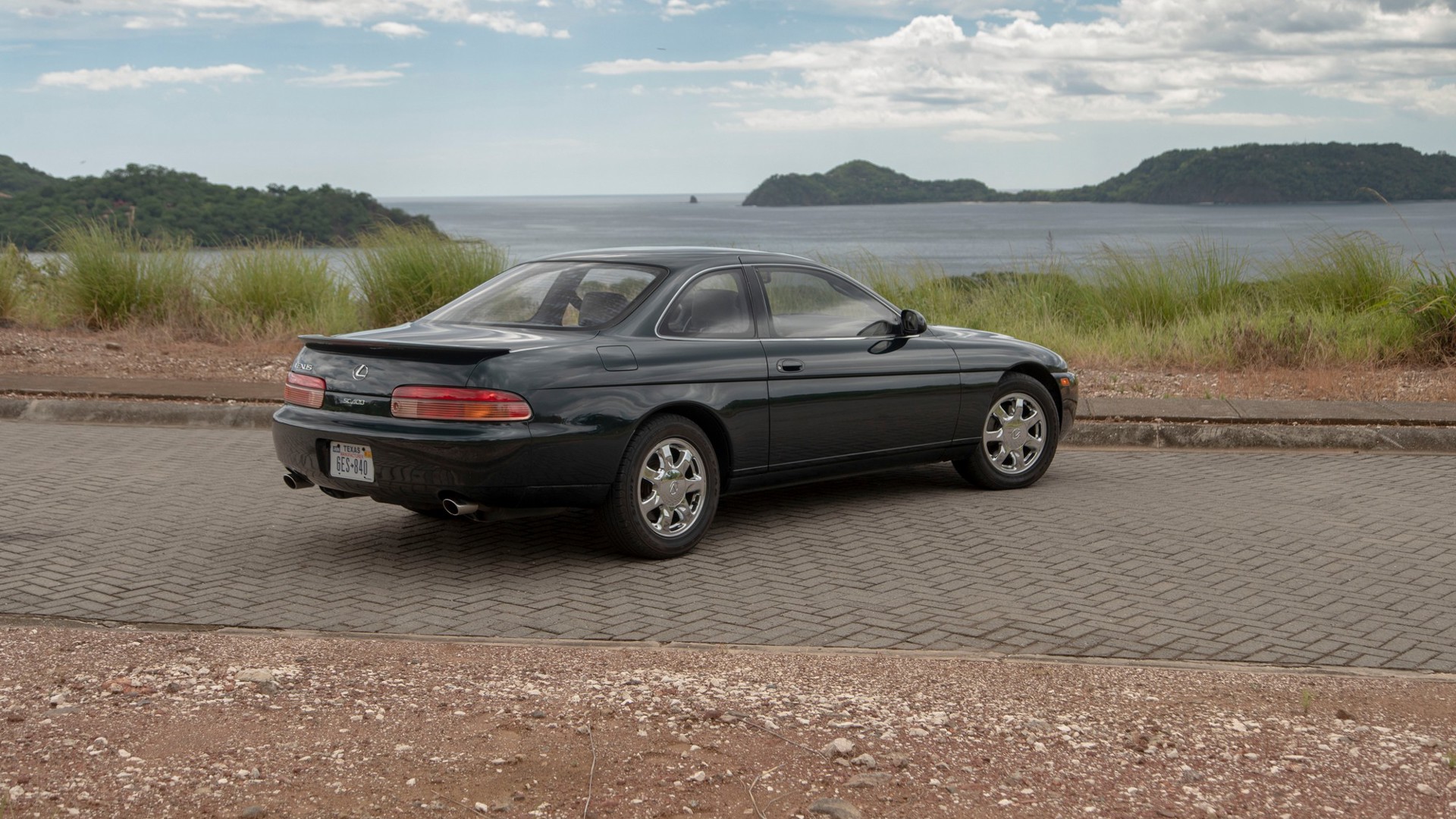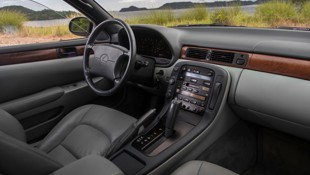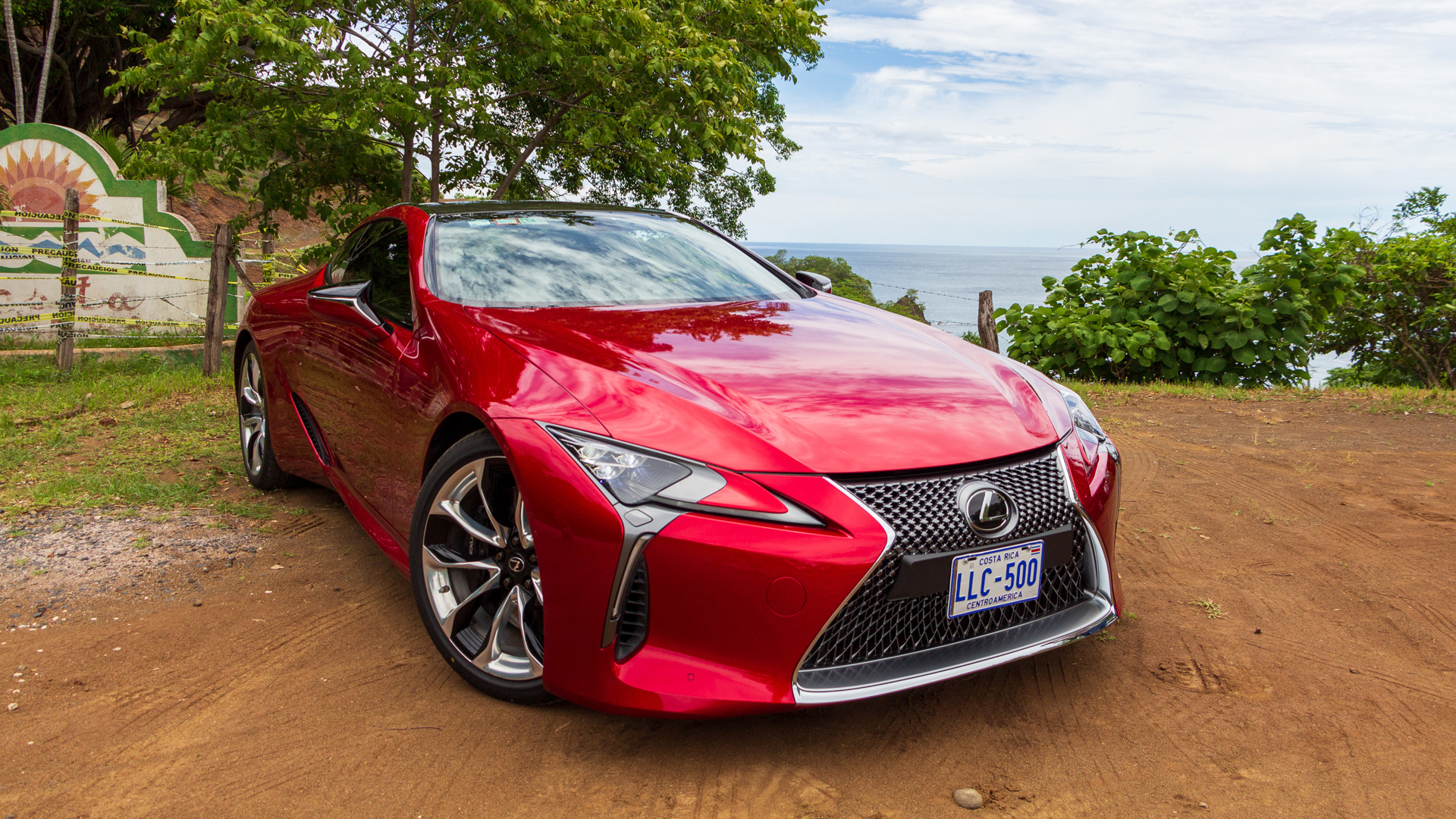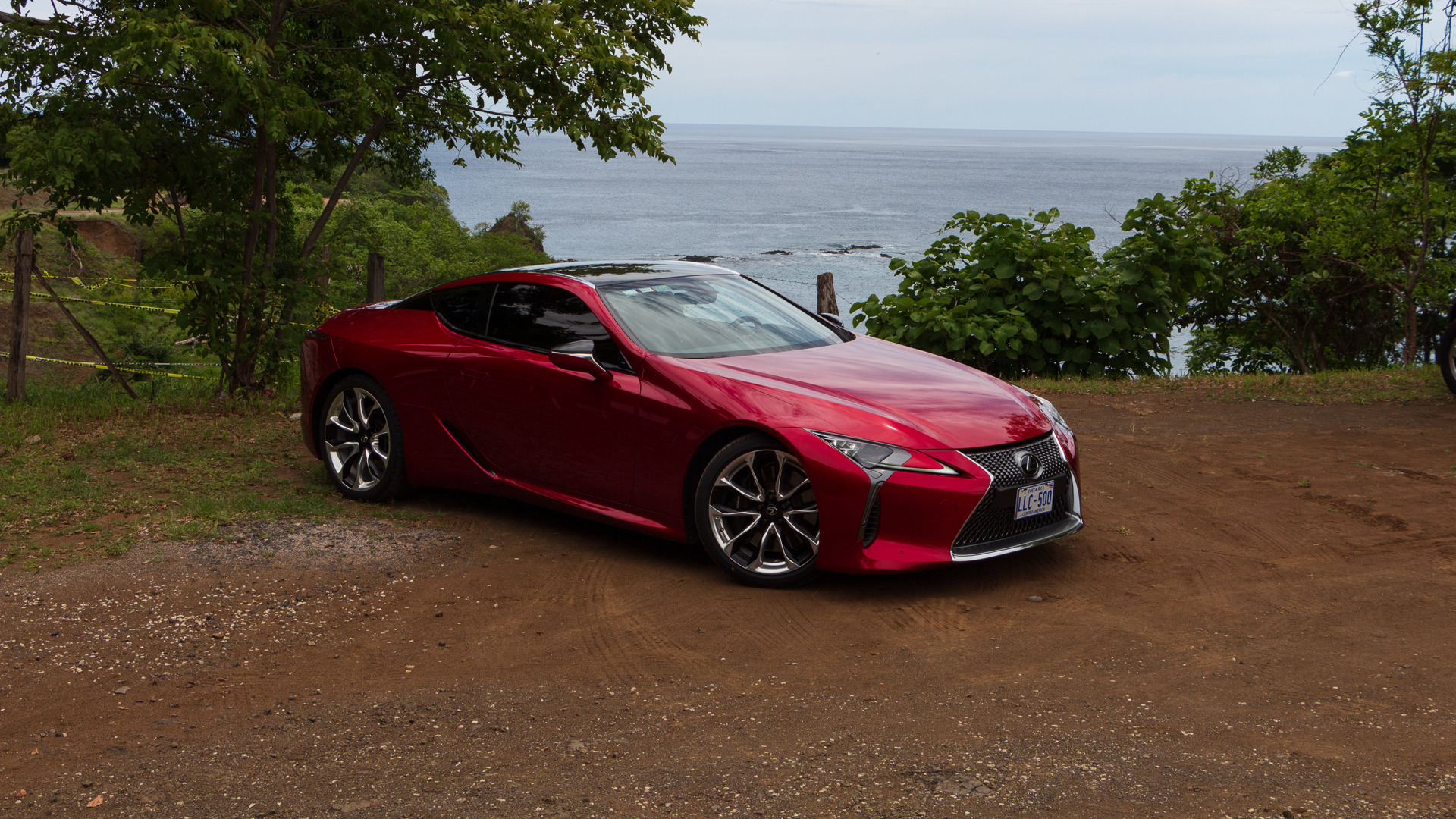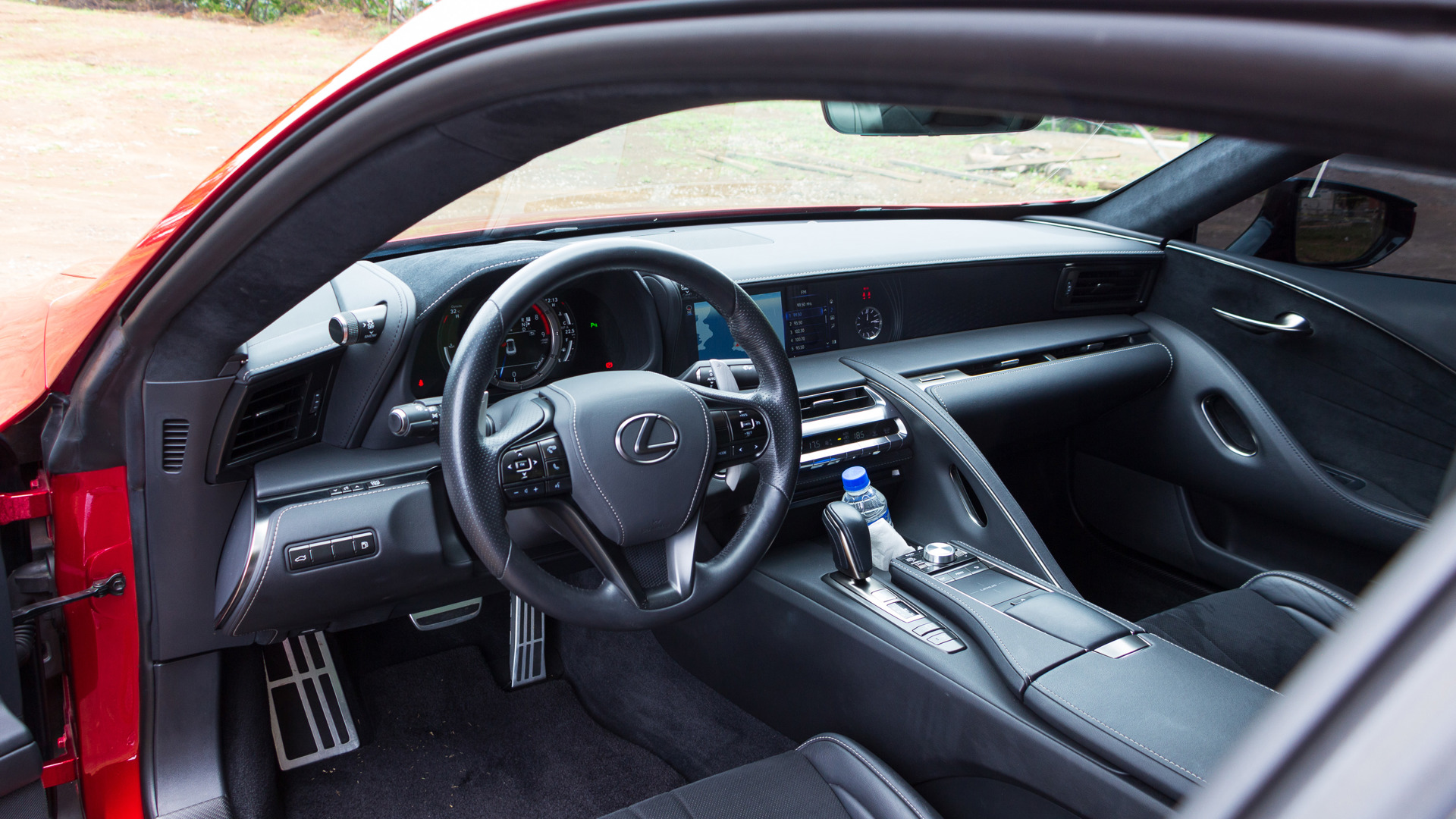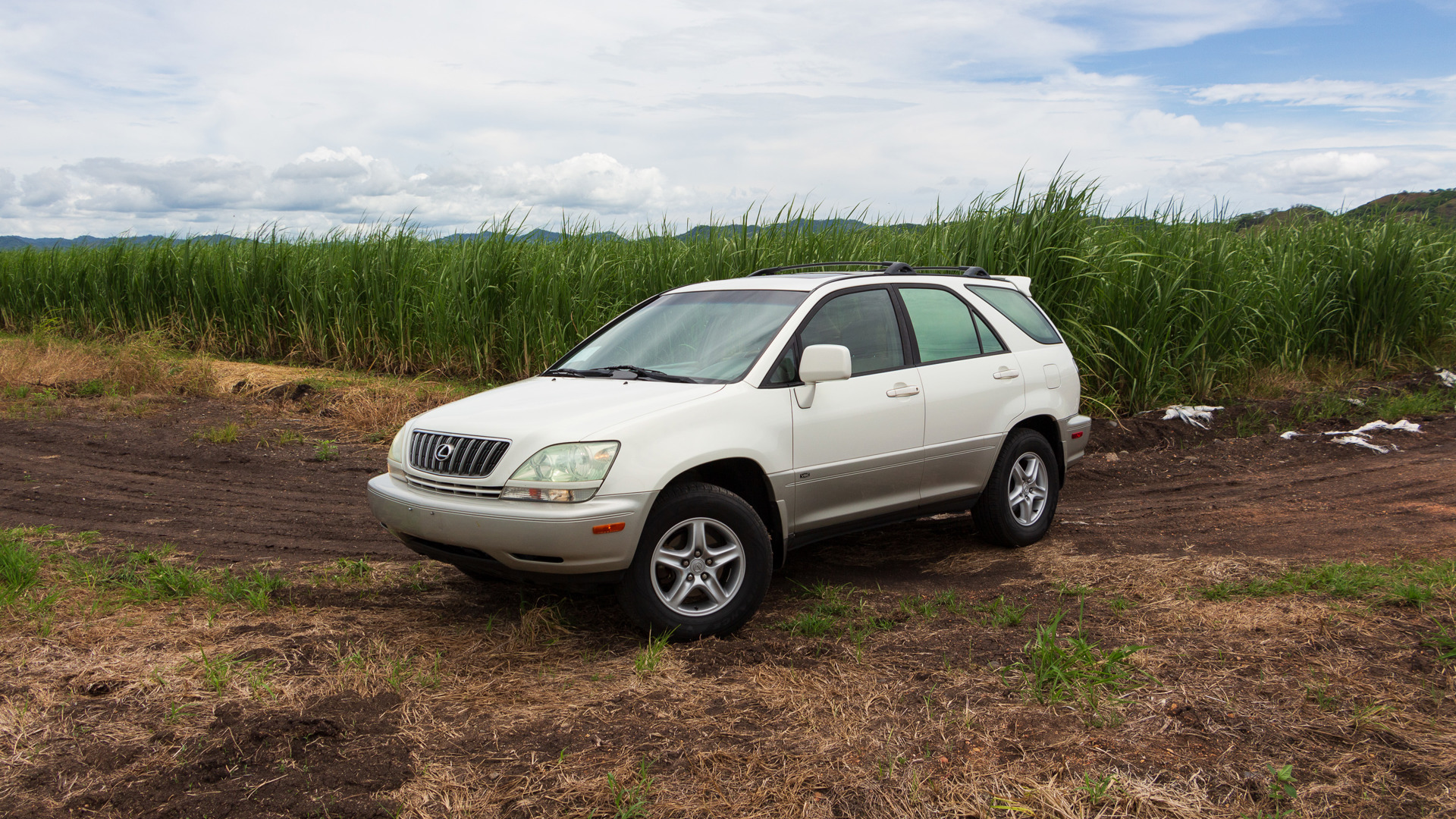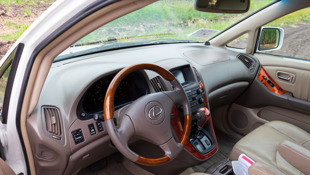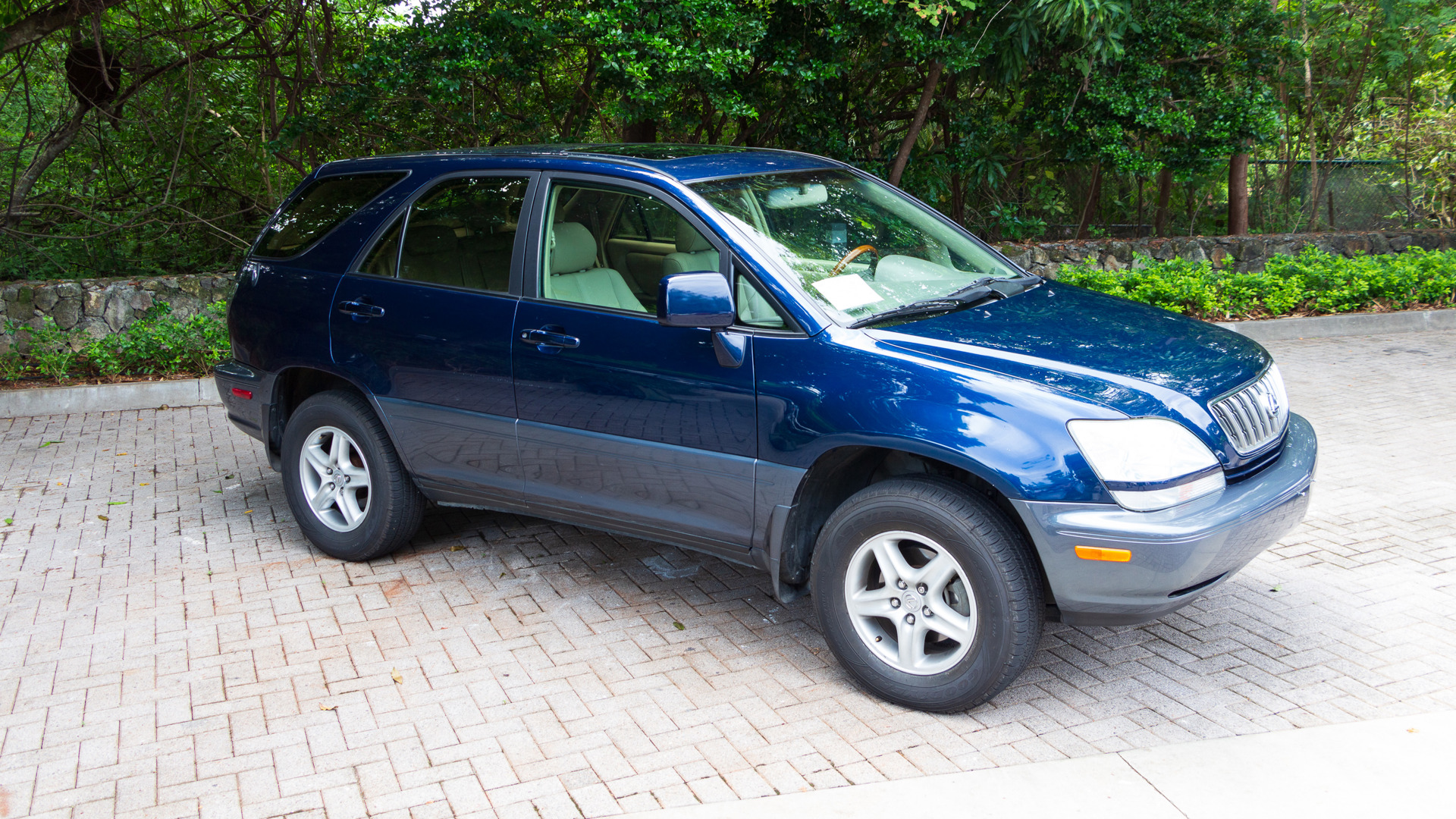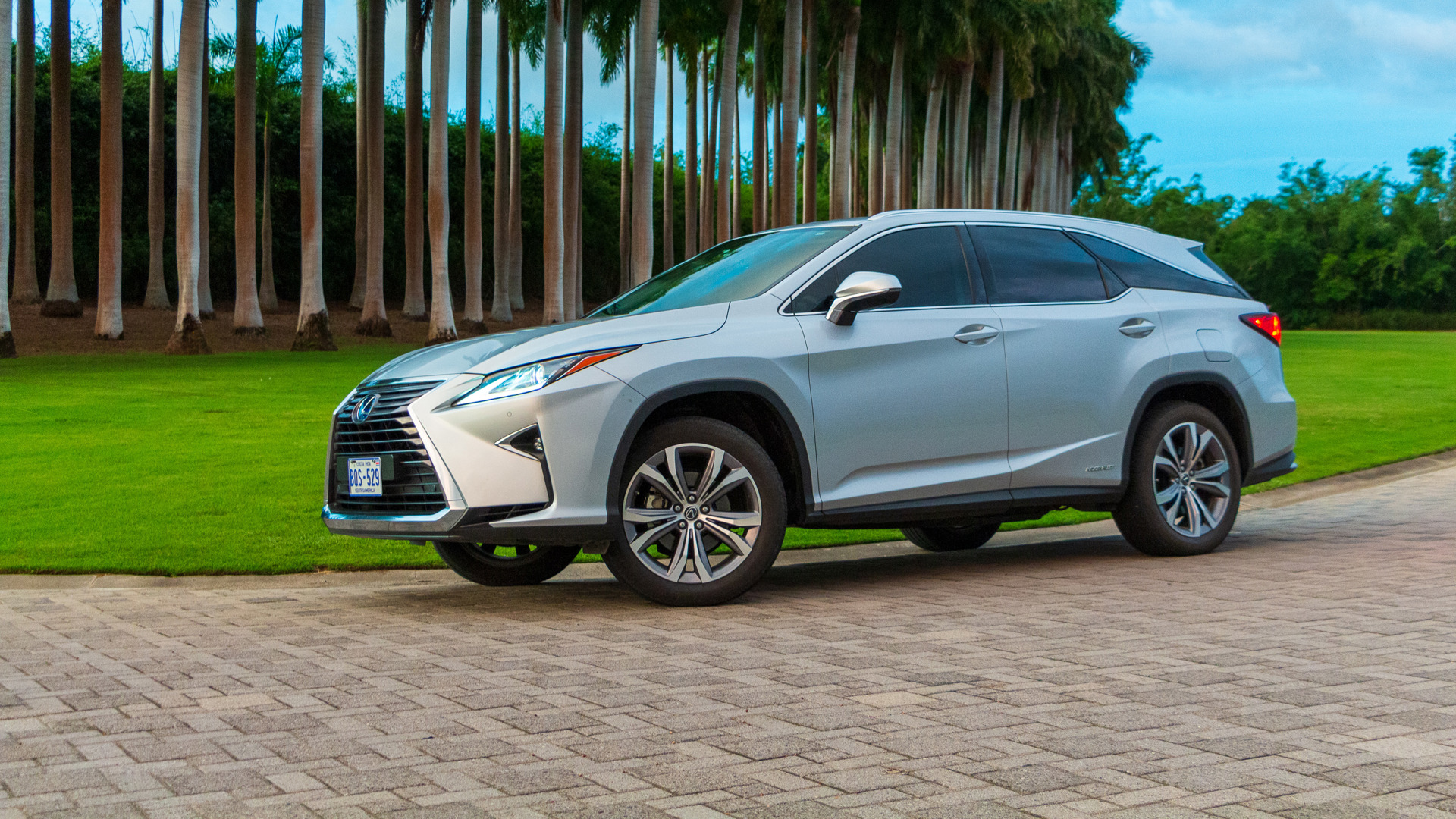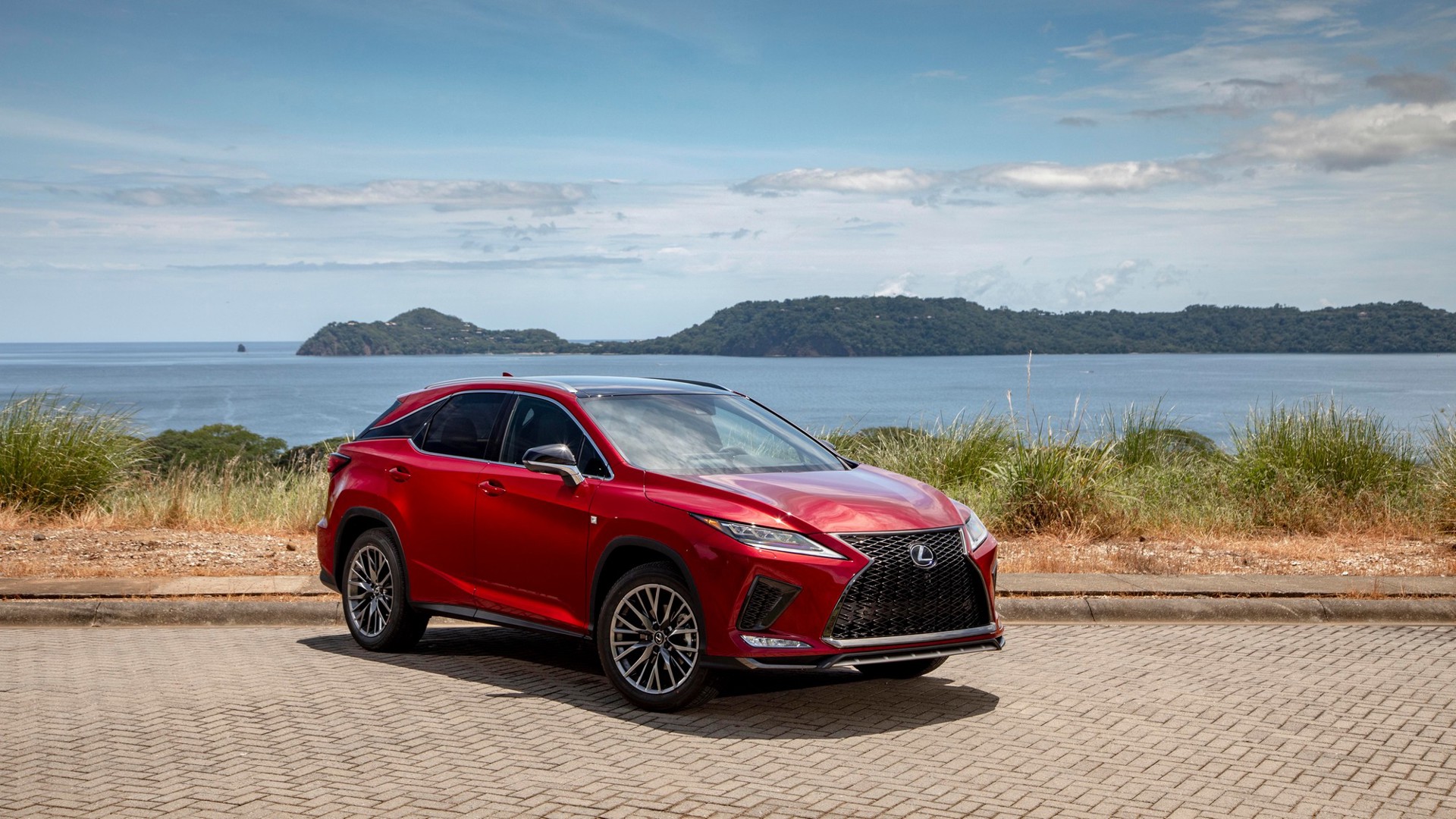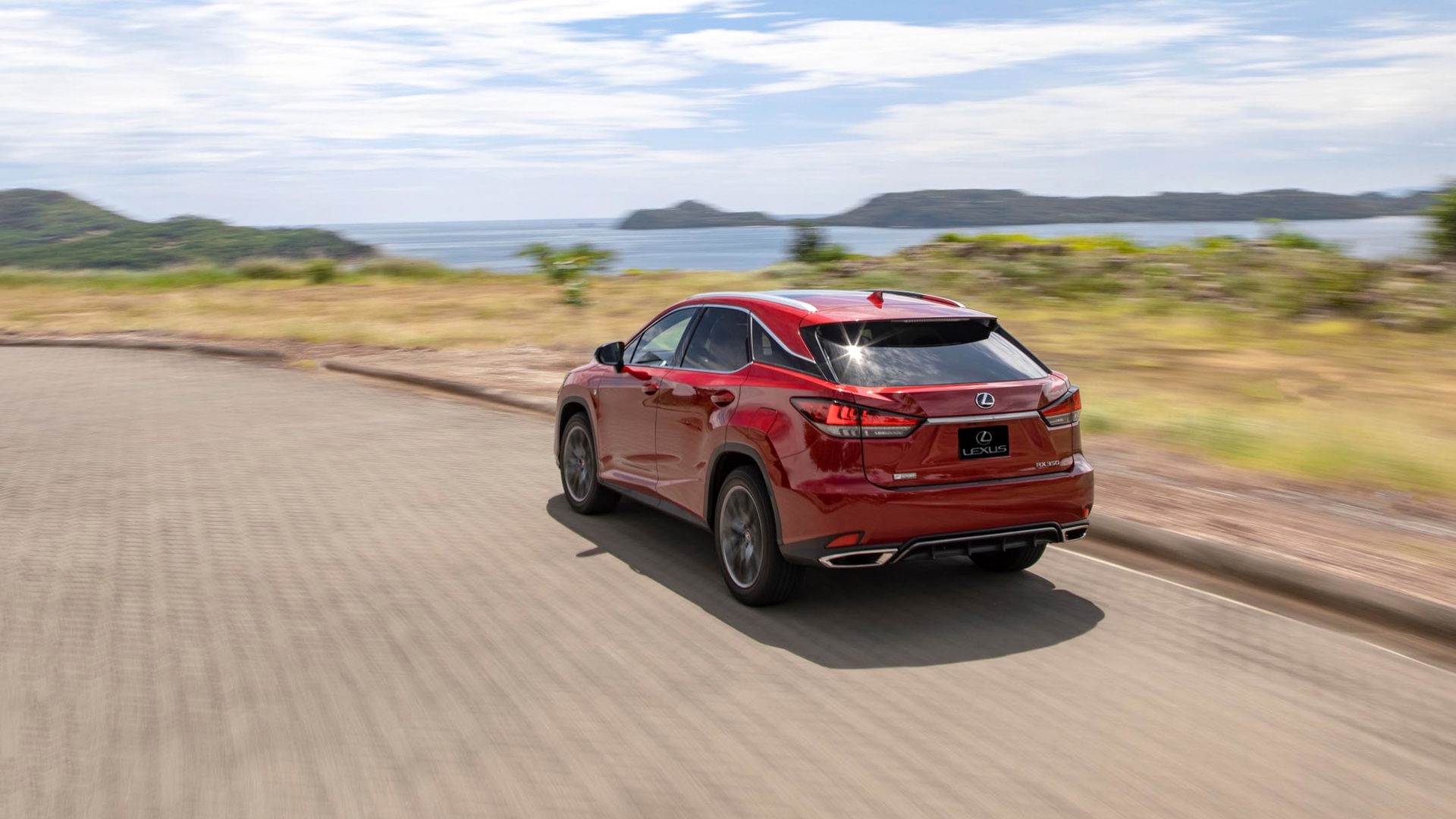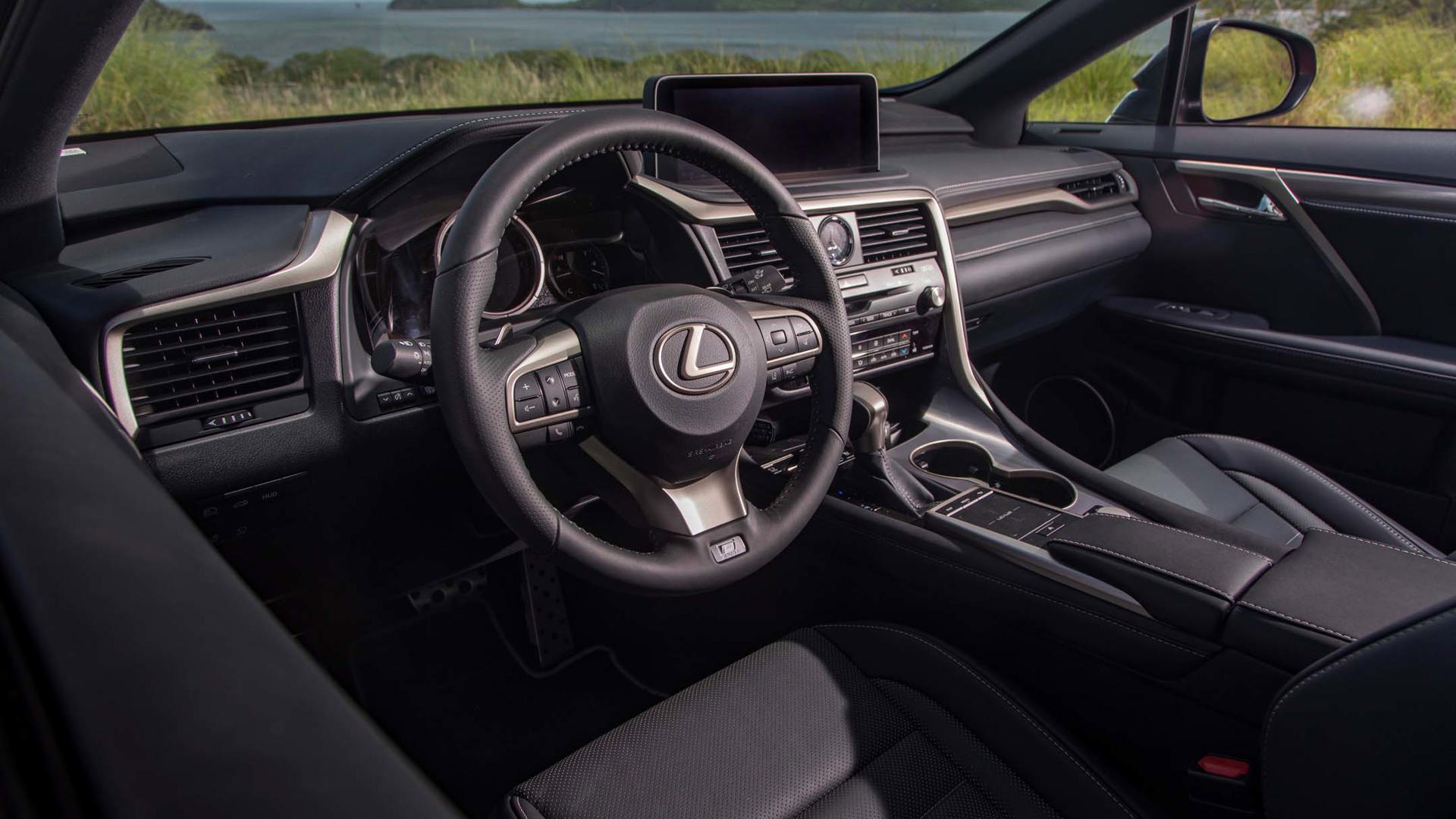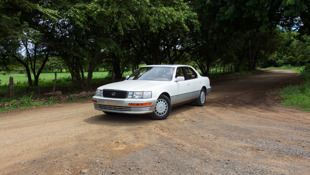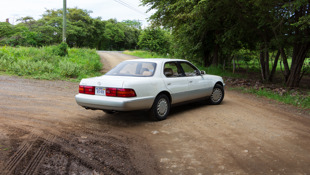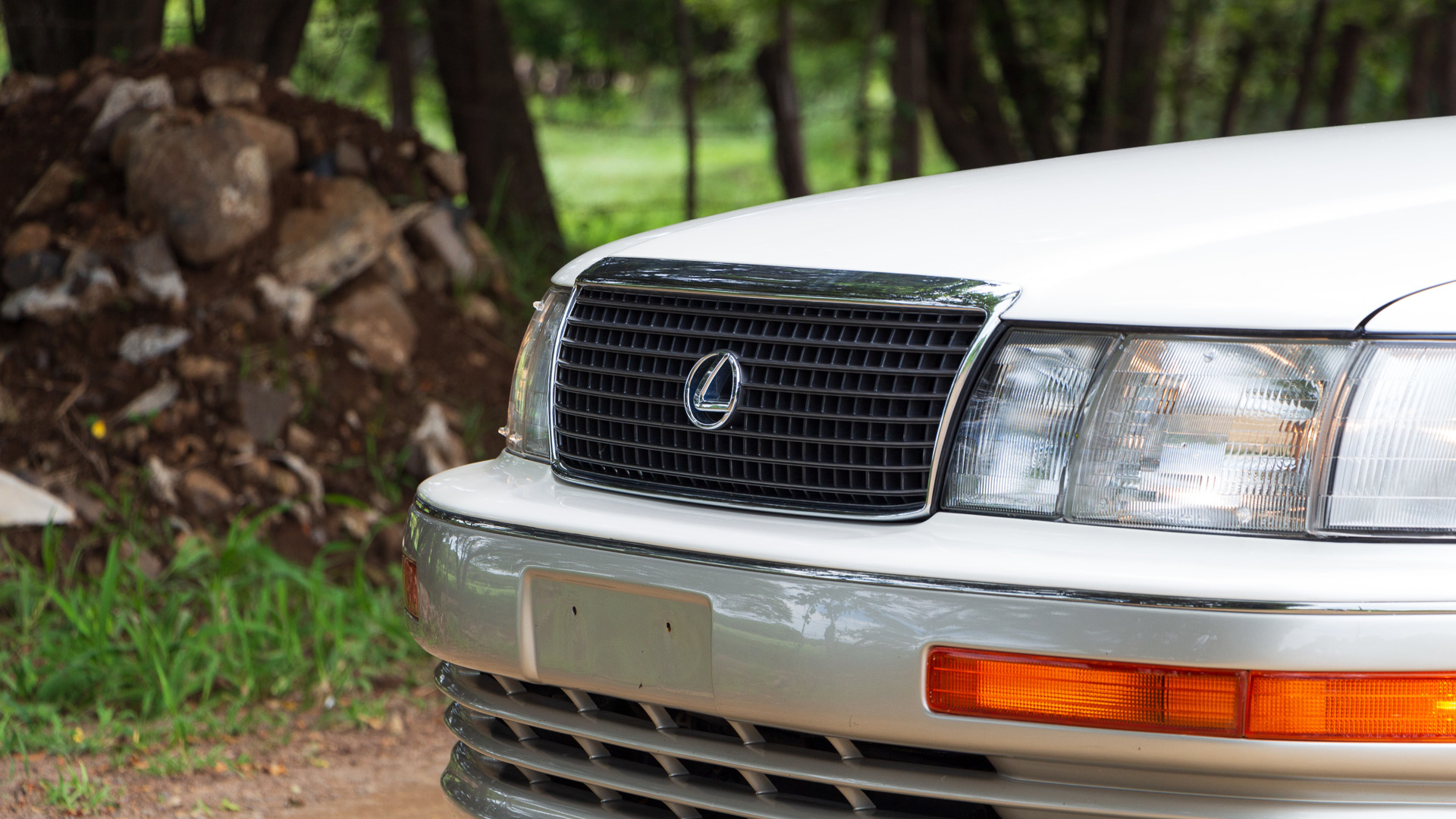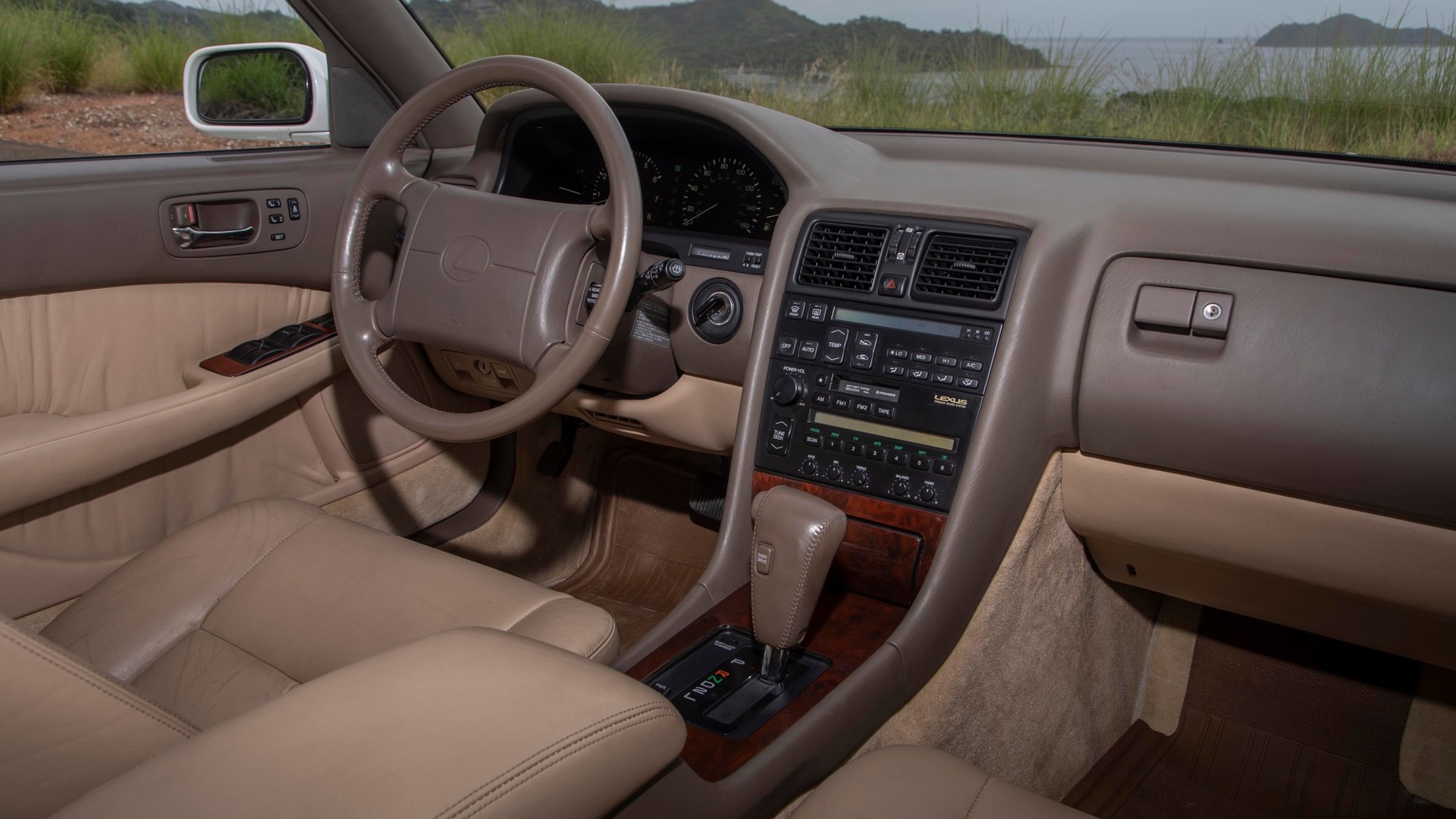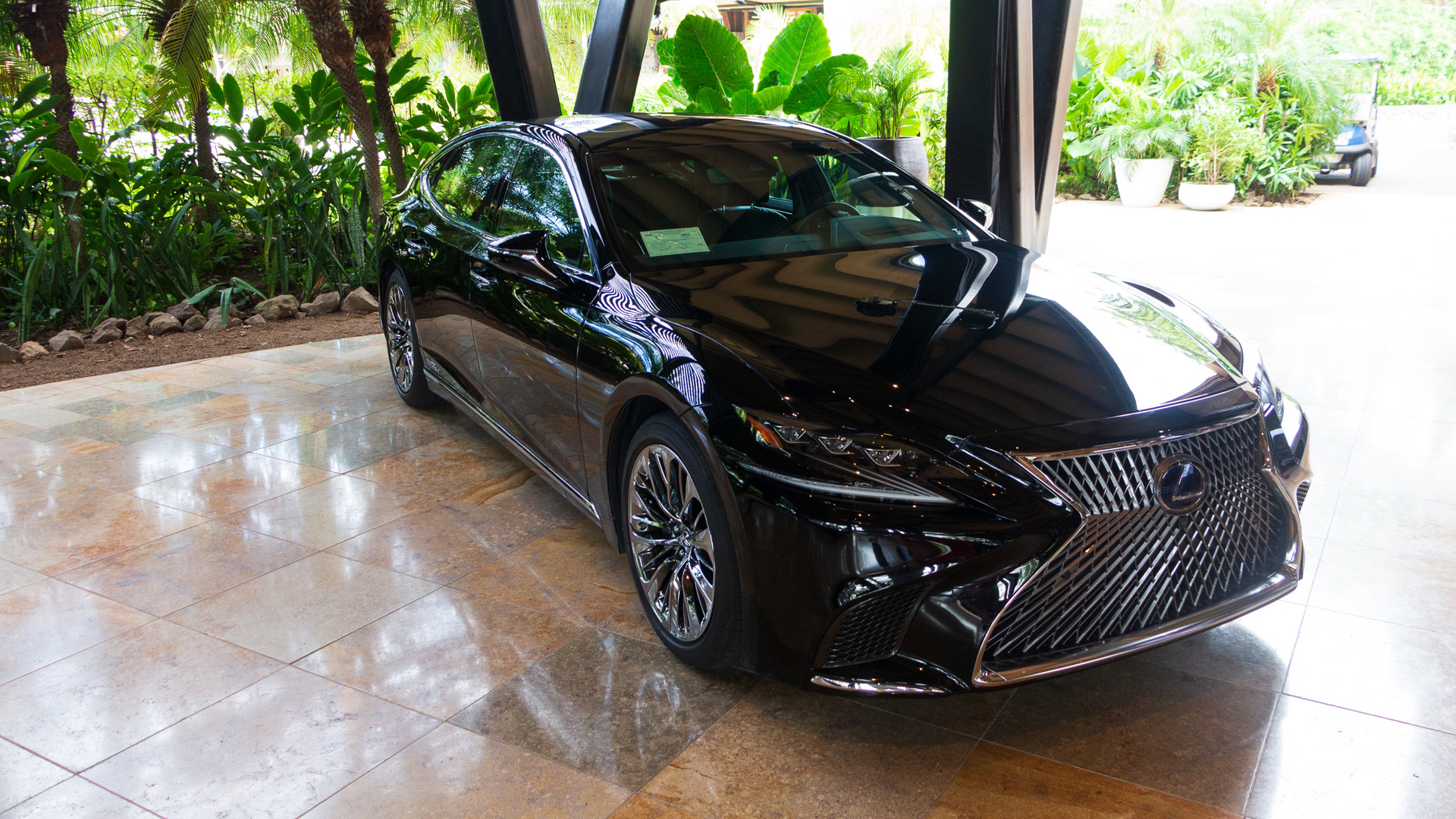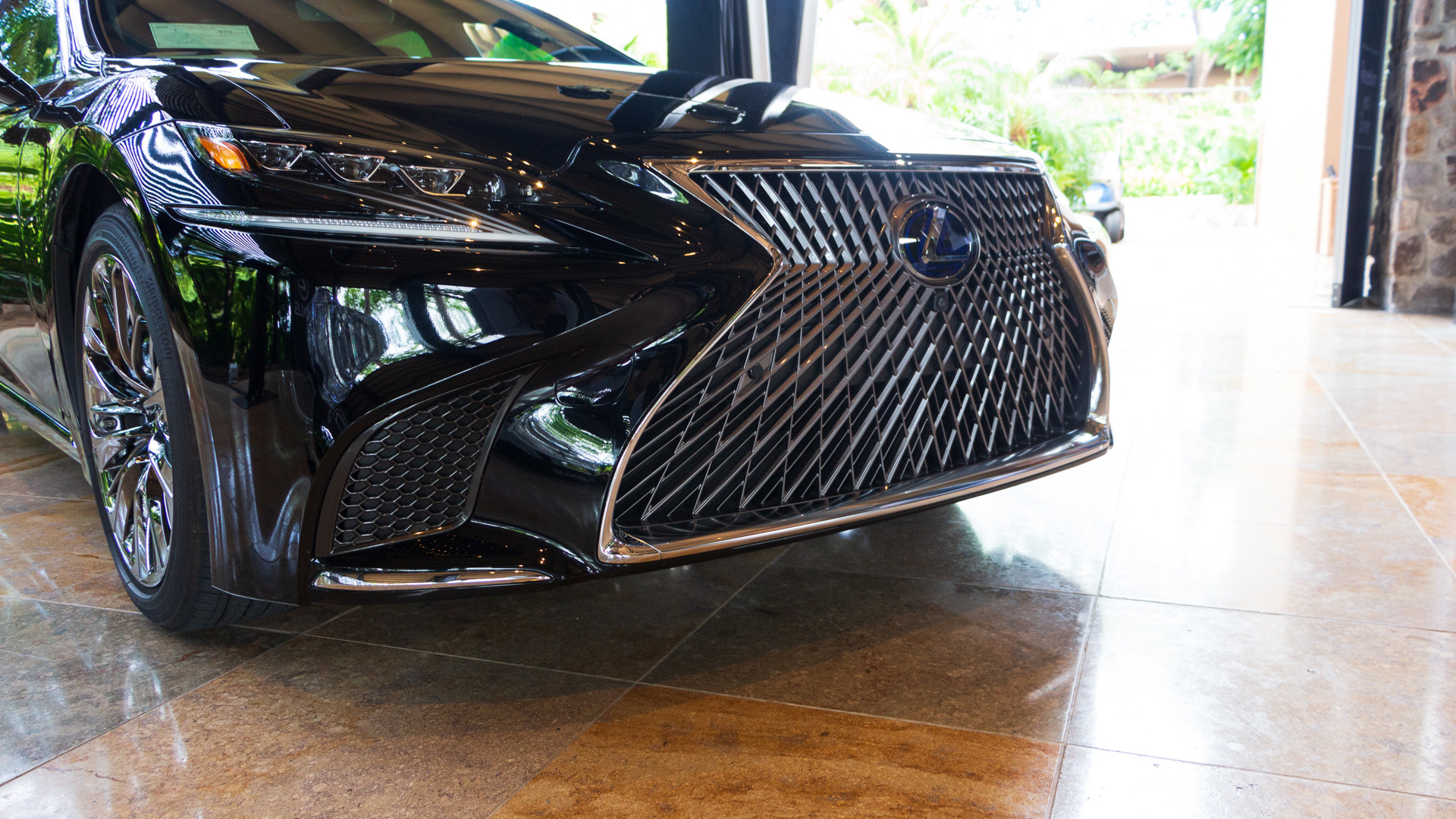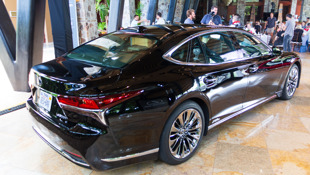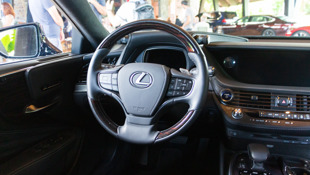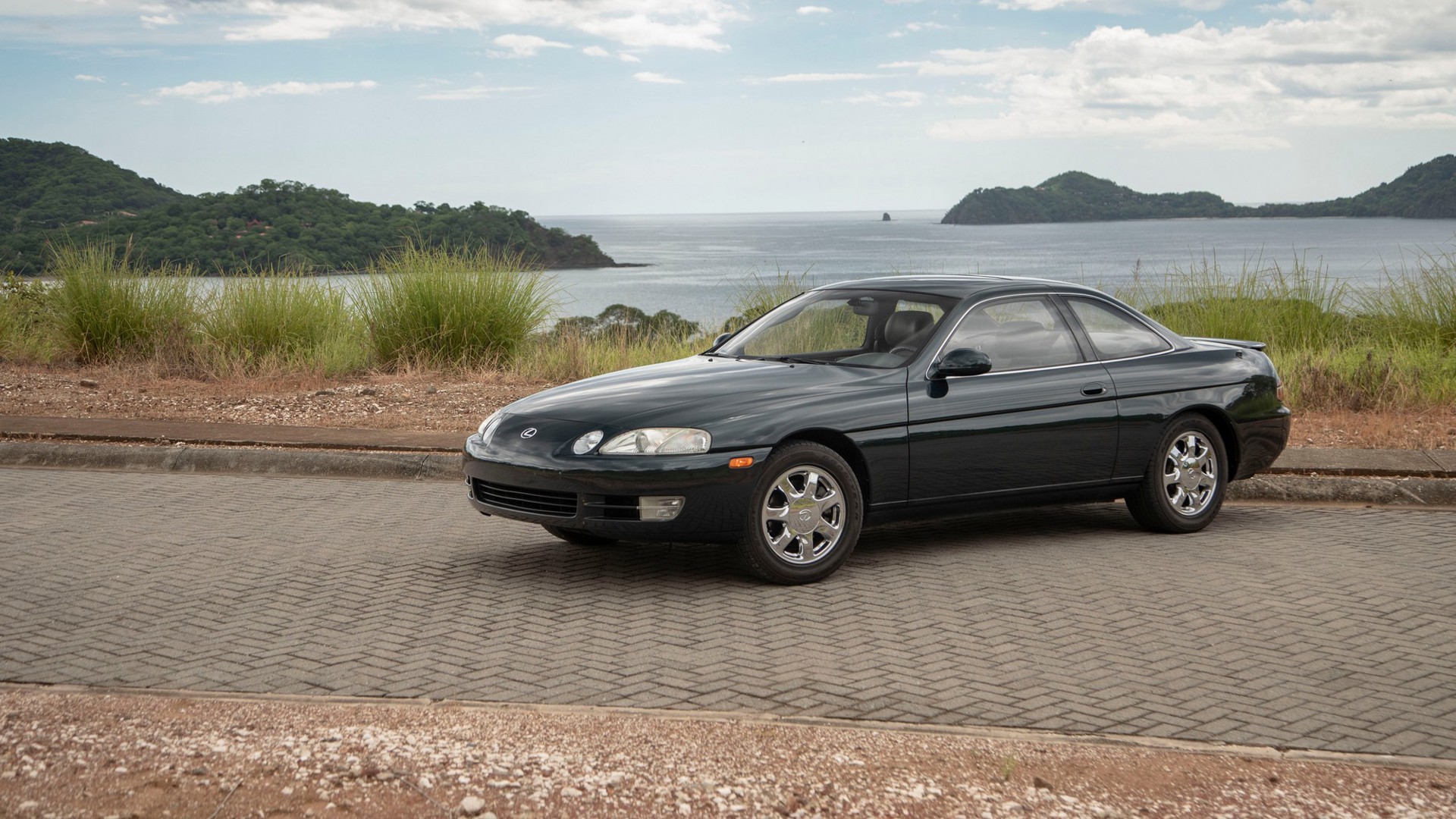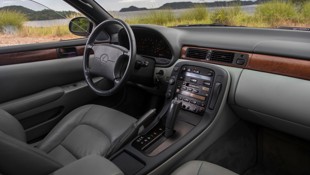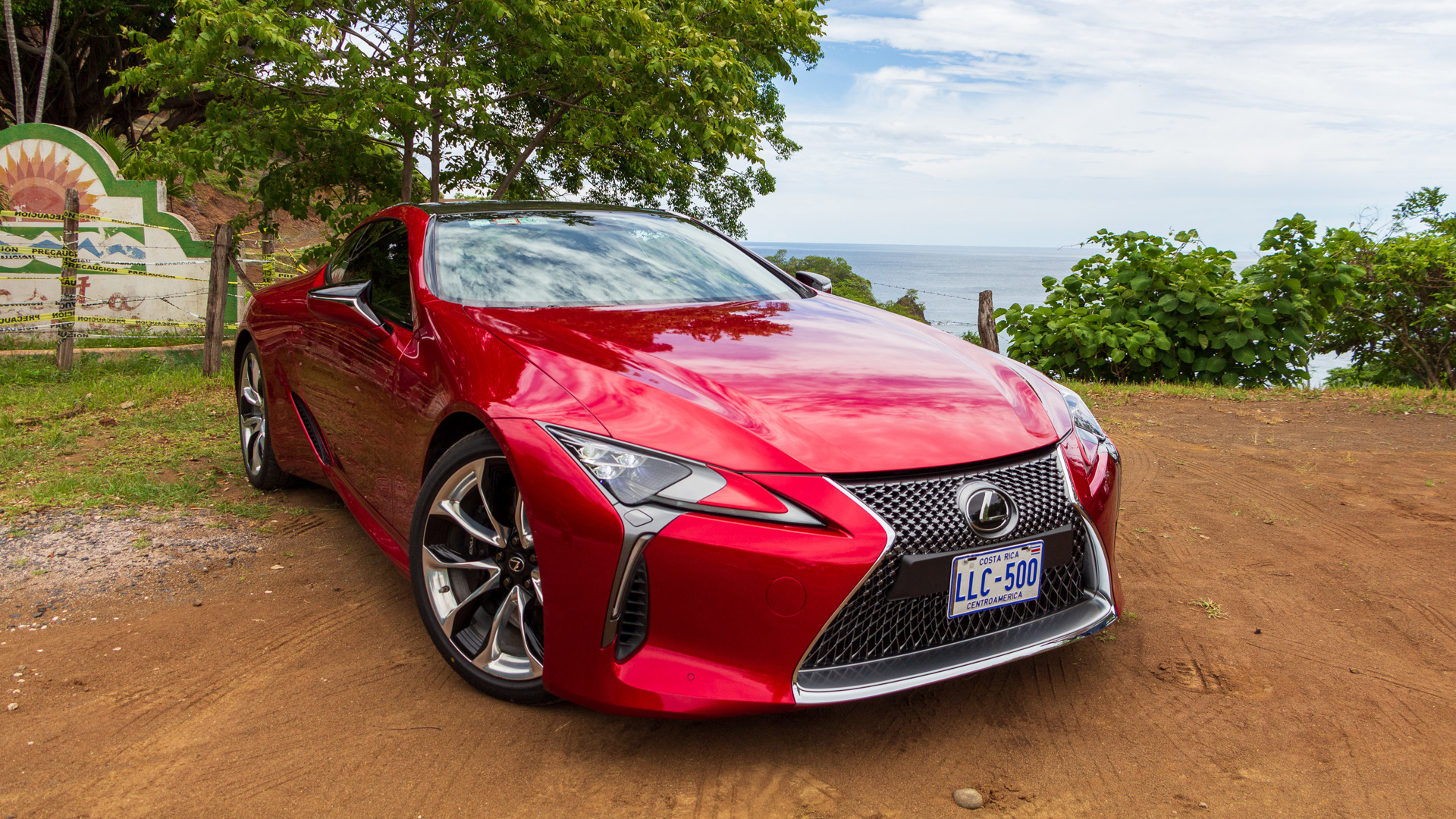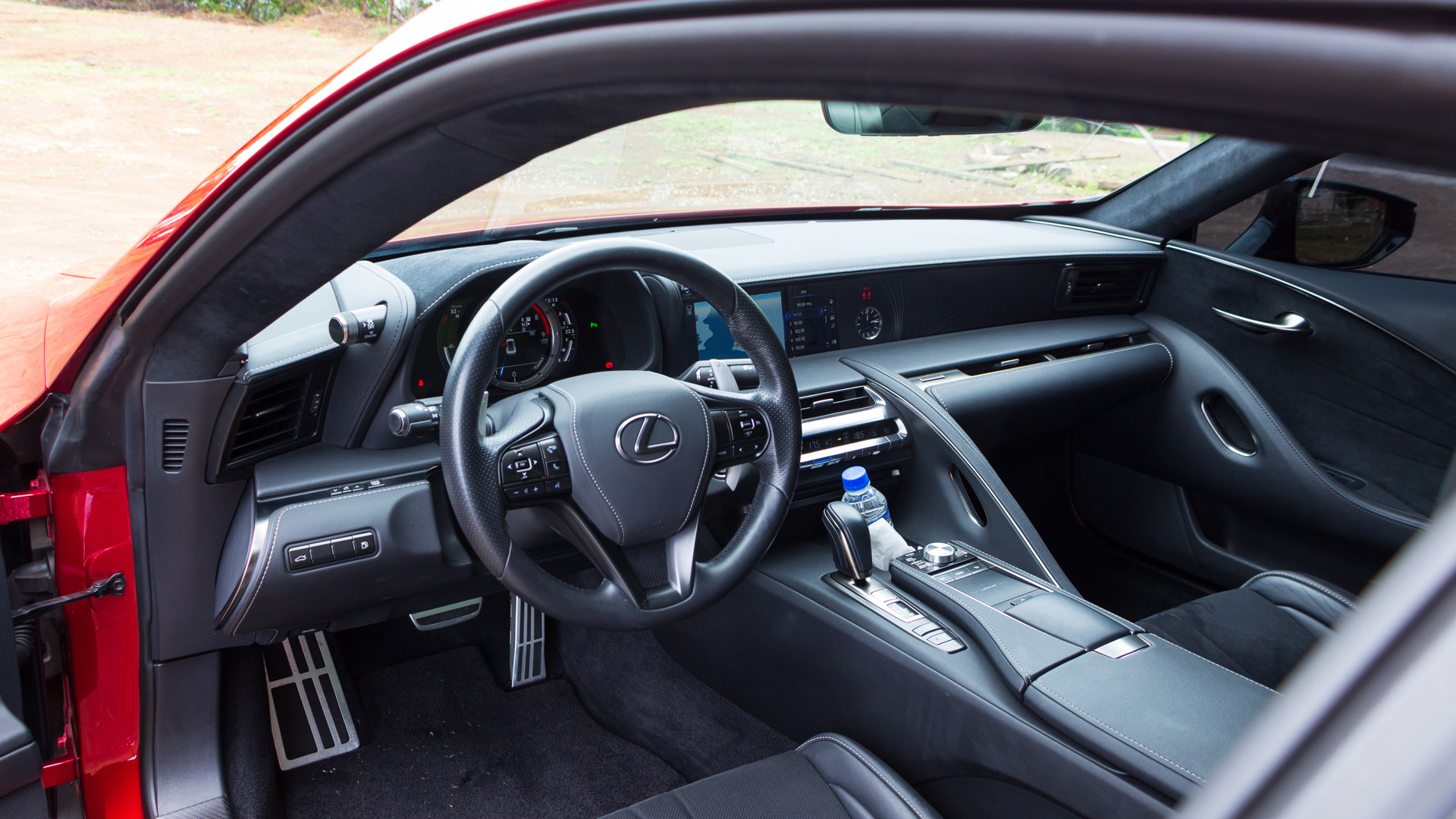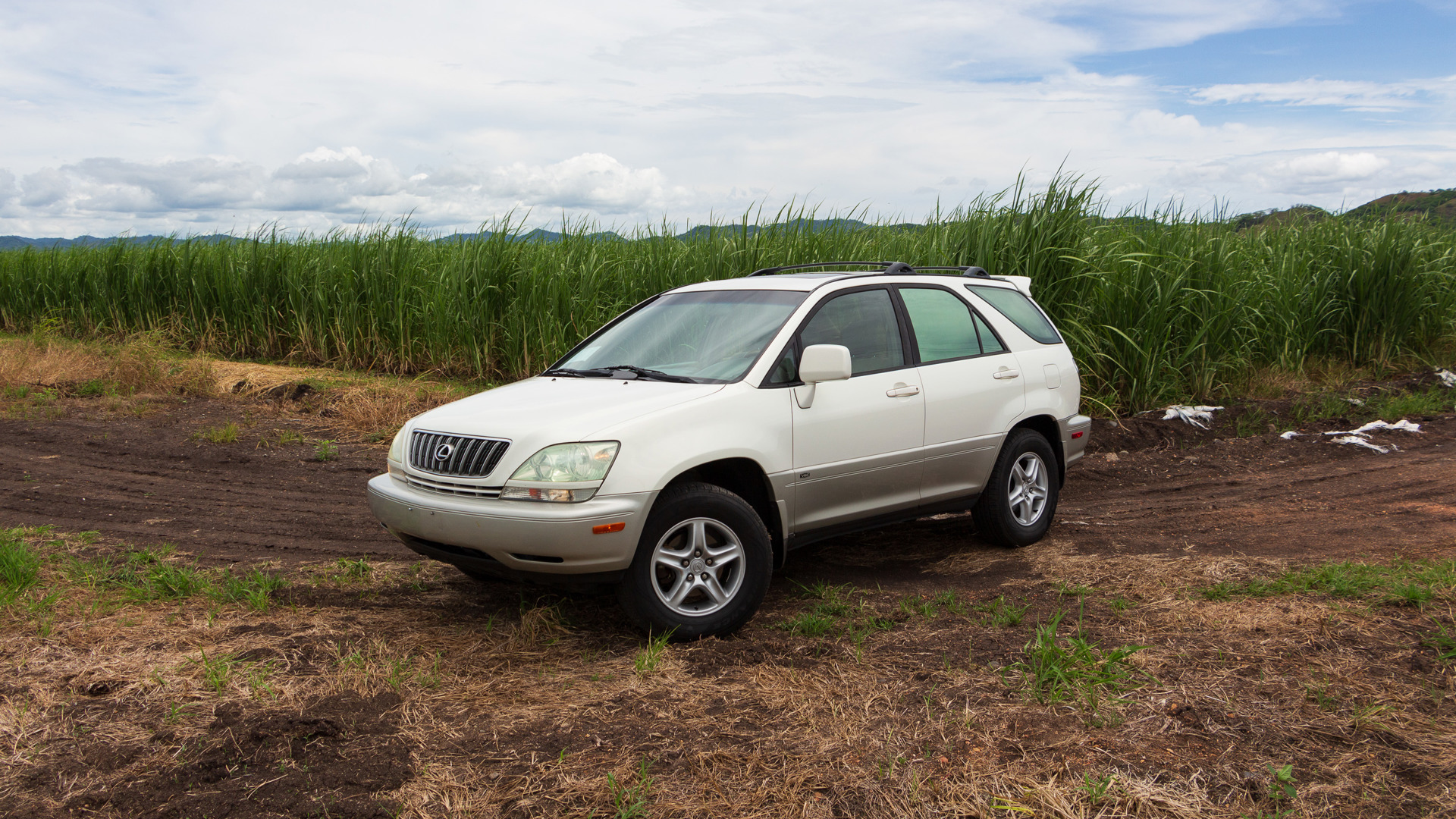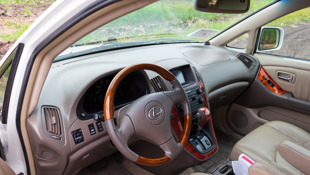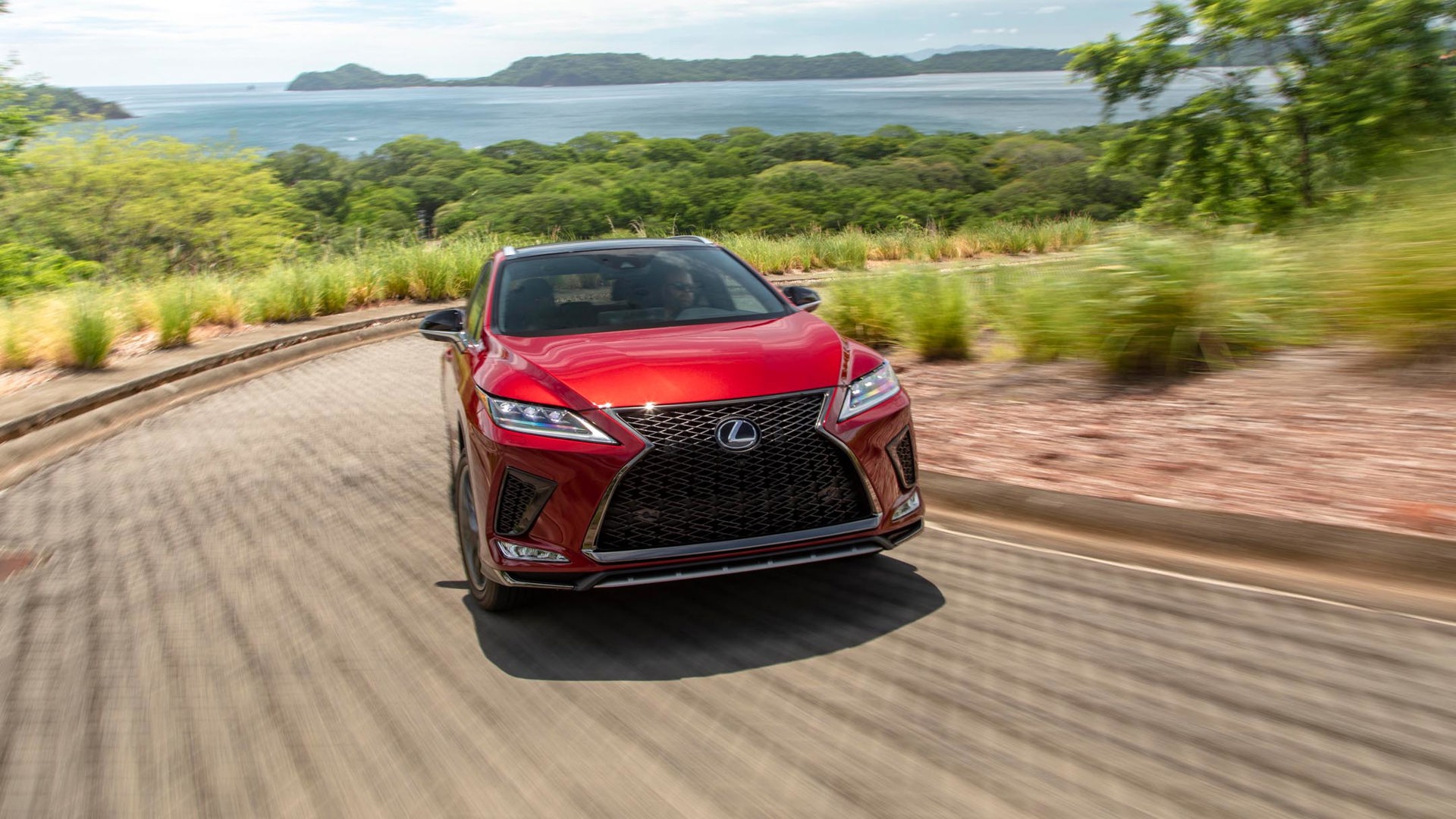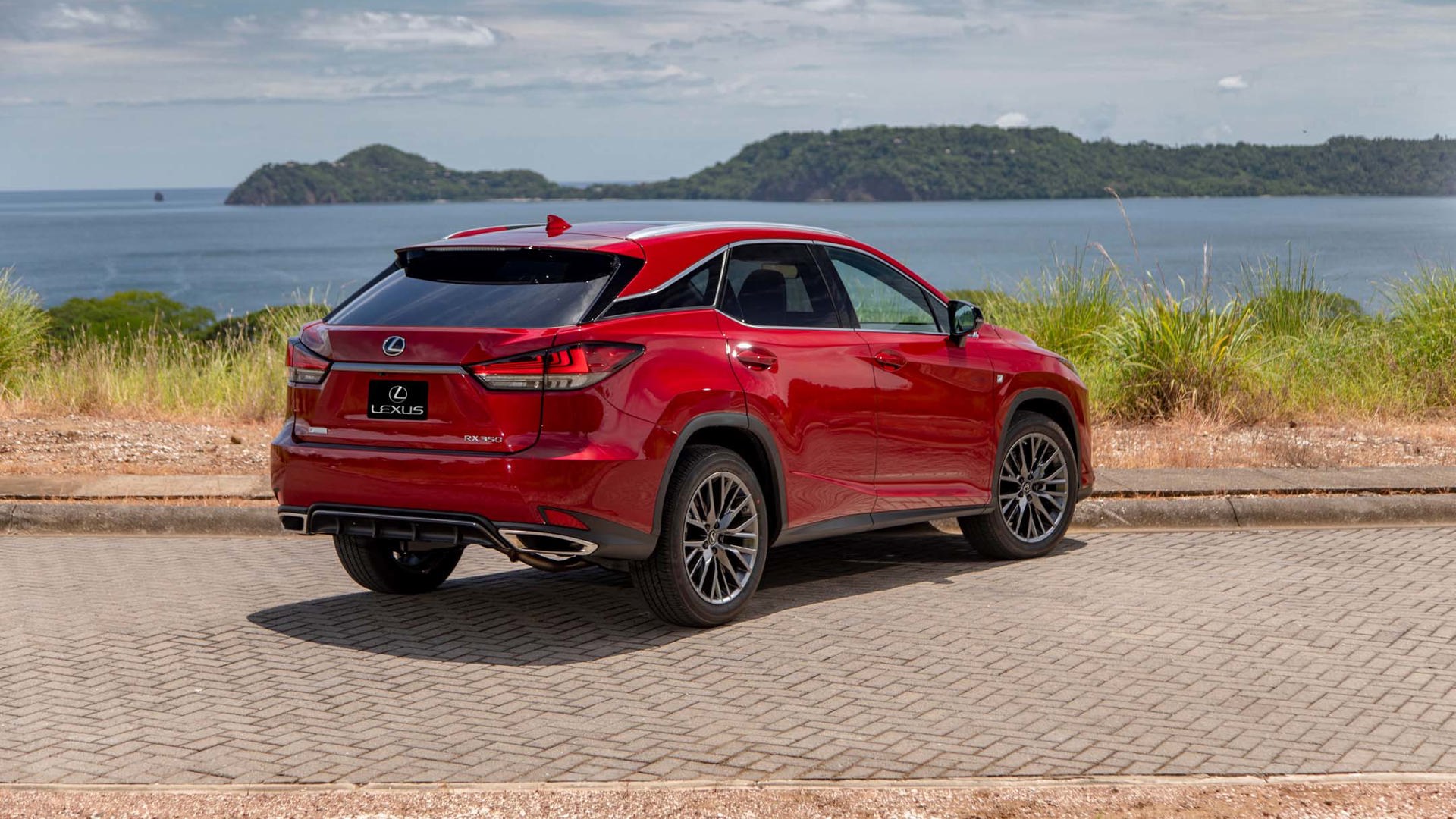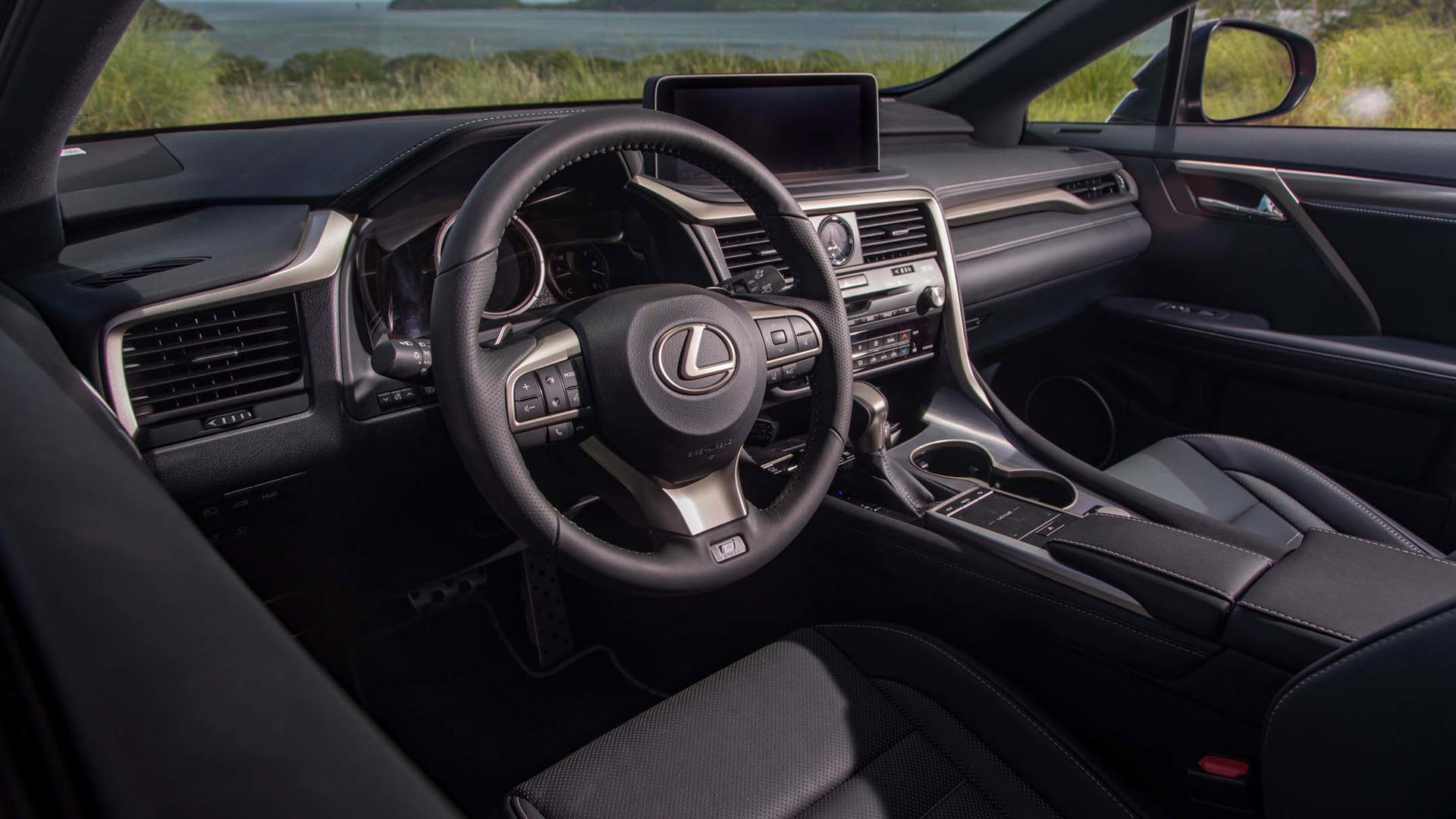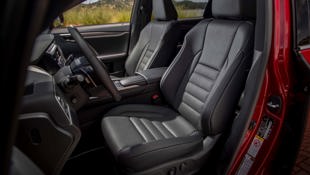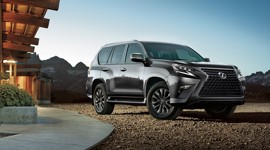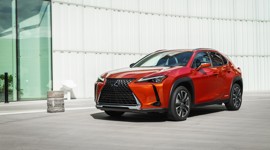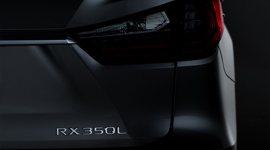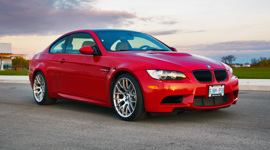I bet if I cut out a two-inch-square piece of dashboard from any of the classic Lexus models that the automaker featured at its Milestone event, you could tell just by looking that the plastic was from a 1990s Lexus.
It's a texture and appearance that maybe doesn't quite match up with the Alcantara, leather, and even ancient-paper-like grains of the company's current cars; but at the time was the pinnacle of in-car plastics.
That interior revolution is a snapshot of how far Lexus, and the industry as a whole, has come in the 30 years that Lexus has been selling cars (29 in Canada). With that, here's a look at the Lexus models that started the brand's successes and the current cars and crossovers that have replaced them.
1990 Lexus LS 400 vs 2020 Lexus LS 500
It started with the LS 400. Well, really it started with the ES 250, but Lexus didn't bring one of those mostly forgotten early ES cars. The real flagship was the LS. Designed to beat the best from Mercedes, BMW, Lincoln, and Cadillac. This was a time when the domestic luxury brands were trying to figure out where they fit, and the Germans were, well, being the Germans.
Lexus built the car that could sit with champagne flutes on the running engine. Or run a ball bearing along every seam. At least in the ads.
The original car has become a classic. Almost legendary in how it changed the luxury car market. It's the first time I've gotten behind the wheel of one and I'm impressed by how quiet the V8 is. Lexus says this was the quickest, quietest, lightest, and thriftiest luxury car when it was launched, and most of those claims are easy to believe.
Today, Lexus has gone for sport, but back then it was all cruising. The LS is near-silent, even with revs and max throttle. The steering feels direct, but there's not a hint of what's happening at the road surface. The suspension is remarkably compliant, and I forgot there was a gearbox, so smooth is the four-speed auto.
There's more body roll than you'd expect from a car today, and that applies to just about every aspect of the driving – there's more play in the steering, more roll before the car starts to actually turn. In the last 30 years, cars have gotten far sharper, making this former flagship feel older than I had expected.
The tape deck in the dash doesn't contribute at all to a more modern appearance, but the simple, straightforward, and practically foolproof controls are a wonderful change from the touchscreens, pads, and rotary dials of a modern car – particular those of a modern Lexus. Twenty minutes in and I could adjust just about everything by muscle memory alone. The thin pillars and the excellent visibility they provide are another great element long-gone to the automobile.
There's more wind noise than I was expecting from a car that was touted as being so silent when new, but that's because I'm doing the LS 400 a disservice. It's a bit unfair, really, because I'm comparing it to the brand-new LS 500 that I drove at the same time. What was whisper quiet in 1989 is a roar by the standards of 2019. The new LS sets a benchmark for what is quiet, and the amount of added luxury is astounding.
Just look at the 3D glass inserts in the doors. And the katana-inspired detailing in the dash. Plus softer plastics, new leathers, and all sorts of new and fancy suedes. While the old LS is comfortable, the new one coddles. Like moving from your favourite recliner to one with new foam, recline action, adjustable bolsters, and shiatsu massage. Because the new LS has the latter two – even for rear passengers. Though both are tight on headroom for me, especially if you've ordered up the dual sunroof option on the newest LS.
The place where the old LS feels most modern to me is the powertrain. Sure, there's just a 4.0L V8 making 250 hp instead of the fuel-sipping and instant torque of the modern hybrid, but the LS 400's eight cylinders are eager to rev while making almost no noise doing it. You can feel here how Lexus has changed over the years toward communicating sporting intent when you plant your right foot. The new engine has more growl. More emotion.
That makes the classic car's ride a little better, too. Narrow tire treads and wide sidewalls make it feel more involving to drive than the wide tread and narrow sidewalls of the new LS, no matter how fancy the new car's suspension is. More importantly, those tall tires absorb impacts much better, making stylists furious and backsides happy. Would I take the old car over the new? Not a chance. Can I see how this car helped launch the brand so well? Absolutely.
1996 Lexus SC 400 vs 2020 Lexus LC 500
Next up, something a little more sporting: the SC 400 and its younger sibling the LC 500. The SC feels tiny. And it looks tiny compared with the LC, since the new one is about 10 feet wide visually and based on the LS platform. The SC looks timeless. Much more so than most cars of the era. The lines are curvy yet crisp. Almost German, but still clearly Lexus. The LC, with that massive grille, has amazing presence. I'm not sure it'll look as good to us 25 years on as the SC, but damn does it look good now.
The massive size of the new model, and that cool carbon roof, make for a much roomier interior. The SC's thin A-pillars offer excellent visibility, and the simple center stack is easy to use, but it's a tight car. The LC, on the other hand, is massive inside. In the front at least. Neither of these are amenable to rear-seat passengers.
The LC's massive bucket seats look like they could keep you in place were the car to somehow become inverted. The SC's have lateral support only slightly greater than those of the average city bus (though they're much more plush).
On the road, the SC's V8 sounds as refined as that in the LS, but with a bit more sound coming through. It's still a quiet shove to speed. The LS's V8, however, is a beast, with a fanfare of sound arriving at around 4,000 rpm. I'm not sure of the exact revs, because when it arrives, you had best be looking up, not down. The LC's 471 hp makes the SC feel like one of the countless tiny and tired diesel microvans I'm blowing by on the road.
The Lexus move to sport shows in the steering here, as well. The SC might offer a touch more feel, since it's still a conventional mechanical system, but there's loads of power assist and everything just feels looser. Lexus assured us the car had been refreshed, and it was an extremely low-mile example, but by modern standards it feels tired.
The LC, in contrast, is as sharp as the cliché'd katana's edge. Especially when you toggle up Sport+ mode. While the SC feels like the one you'd want if you need to drive all day, the LC makes these narrow and windy Costa Rican roads the pattern for your ultra-sharp scissors, making decisive cuts that slash down winding mountain paths. This is the future of grand touring, and while it has the ability to become as smooth as the SC, maybe even smoother, it's in the Sport modes where the LC shows off the Lexus ideal of predictive hospitality.
1999 Lexus RX 300 vs 2020 Lexus 450h
As much as I'm enjoying these cars, it's time for the crossovers. And I almost mean the crossover. Because while the RX wasn't the first SUV to turn down the ruggedness and crank the luxury to 11, it's probably the most successful. It's certainly the one to popularize the formula.
Arriving when buyers wanting a nice crossover had a choice of a top-trim Jeep Grand Cherokee, the Infiniti QX4, or maybe a Land Rover Freelander, it's easy to see the RX as a breath of fresh air. Based on the Camry, or should I say the ES, this crossover is remarkably car-like, even compared to the LS and SC. The faux wood trim looks startlingly out of place in 2019, but the upright driving position, excellent visibility, and all-wheel drive are exactly what brought buyers to this segment. Impressively comfortable seats, a quiet and cushy ride, and effortless steering are what keep them there.
This RX really shows how Lexus developed the reputation for reliability it's enjoyed all these years. The RX 300 we're driving has around 180,000 miles on the odometer – there isn't a single creak or rattle anywhere in the cabin. And these aren't fully restored models: There's still enough wear on the seats and some other bits that make it clear these are actual miles. The notchy steering shows that maybe it could use a slight mechanical touch-up, but this is a rock-solid crossover more than 20 years down the road.
Until, of course, I get into the new hybrid model, with a massively more powerful engine, a much better engine noise, and luxury features like ventilated seats that weren't even imaginable in 1998. I would argue that the old one looks better, though. The current RX just looks a little too stretched in the rear, though you have to admire the Lexus commitment to the spindle. Forget the grille, the shape extends into the top-down view and even the tailgate and rear bumper. The new RX is far more fun to drive, boasts massively more power, and can probably go twice as far on the same tank of fuel, while giving me more comfort. Can I have the old infotainment system, though?
For decades I've heard about the original LS. Which should make it little surprise that for me it was a bit of a "Don't meet your heroes" moment. If you (maybe not so) fondly recall the cars of the 1980s, then it's clear why there is so much love for this game-changer. But for someone who is used to post-2000s cars, they sit in a strange world between the old classic, driven fondly on Sunday, and the modern car that is happy to talk to my phone and will park itself should you so desire.
The same goes for the SC and RX. For me, at least. They are clearly icons, maybe as important to the automobile industry as the 1965 Ford Mustang or the first overhead valve V8. But they're so close to modern that they're still really a daily driver – not a sunny-day classic. Of course, it's only been 30 years and they really only feel about 10 years out of date. Perhaps that's the most impressive part here. It's hard to see the current cars managing the same feat.
